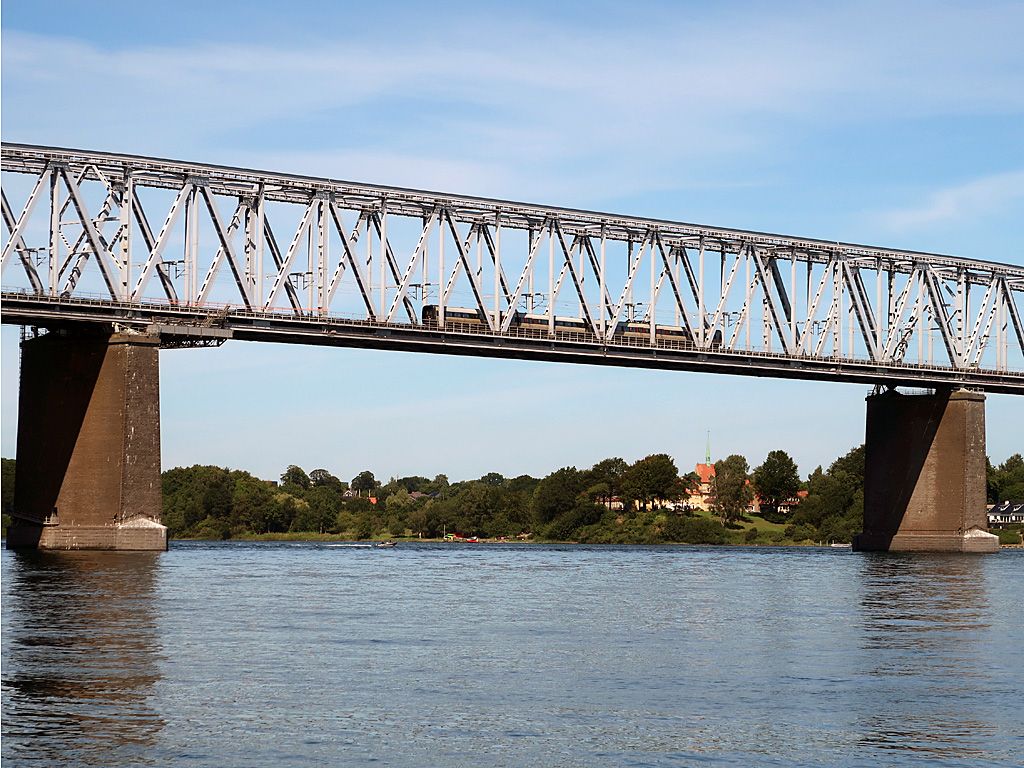The Old Little Belt Bridge from 1935.
Funen & Corona Culture
Our plan was to travel in Poland, but then the corona pandemic broke out. Its fierce battle between culture and nature is a global test of the climate crisis.
When the borders of Europe closed in March 2020, we decided to see Funen from our VW Bulli. We wanted to explore our native island and cultural perspectives of covid-19.
During the early summer lockdown, we found nature experiences. In the late summer, we visited reopened cultural institutions. Our route through the island’s municipalities followed the coastline starting in Odense, where we now live. Seen in this way, Funen is itself all the way around but with local characteristics.
You may take the whole trip to get an overview, search for a town or an institution to gain insight or scroll to find experiences. We give an impression of Funen as we saw it. It has more attractions, which can be found in guidebooks and on websites.
Odense Municipality

Hans Christian Andersen is an important figure in Odense. Visitors meet the world-famous honorary citizen outside the Railway Station after crossing a road and the new light rail. The sculptor Bjørn Nørgaard's monument from 2005 is a nuanced description of the storyteller's personality and work. It matches Andersen's format, and its title is, The Trinity - The Shadow, The Traveling Companion and The Improvisatore.
Odense will open renewed museums for the poet Hans Christian Andersen in 2021 and for the composer Carl Nielsen in 2022. One of the five Danish forts from the Viking Age, which are candidates for the UNESCO's World Heritage List, was situated near the city centre.
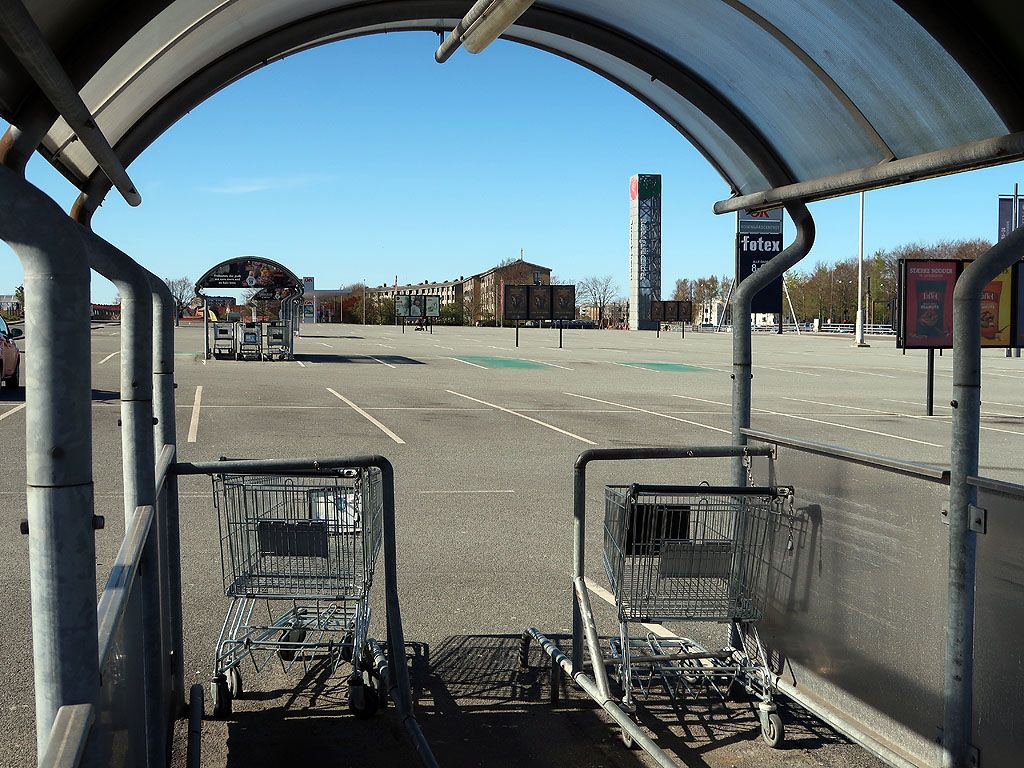
Rosengårdcentret is one of Denmark's large shopping centres, and we often go there. When corona closed the centre in the spring, the carts stood unused in the deserted parking lot.
This experience was new to us. Until then, we only knew about pandemics and their consequences from other times, countries or groupings.
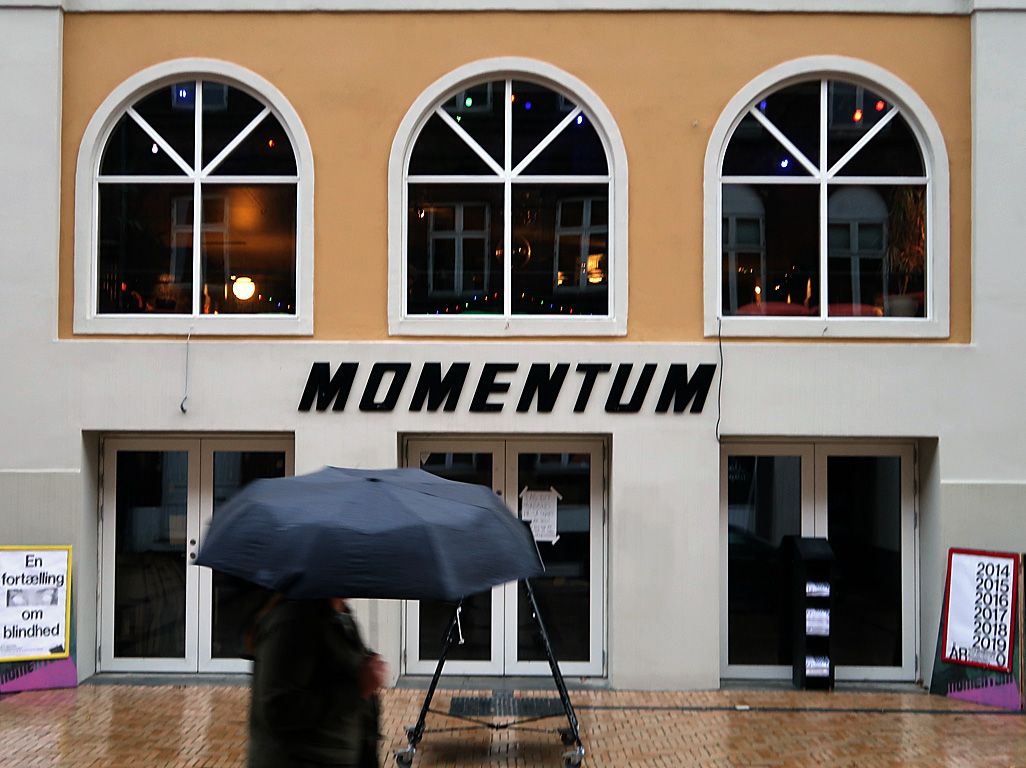
In October, we went through an epidemic at the theatre Momentum. The setting was a dramatization of the Portuguese author José Saramago's “Blindness". The audience lay on hospital beds bedazzled by white glasses. The play is a harsh description of physical, moral and social decay. The required medical masks added to the realism. In the theatre's programme, the director Christian Lollike writes, “All performances this season examine a new beginning for a common future. Welcome to the YEAR ZERO.”
In December, many sectors of society including cultural and leisure life had to lock down again. We look forward to follow Momentum's performances about the future, when the theatre reopens.
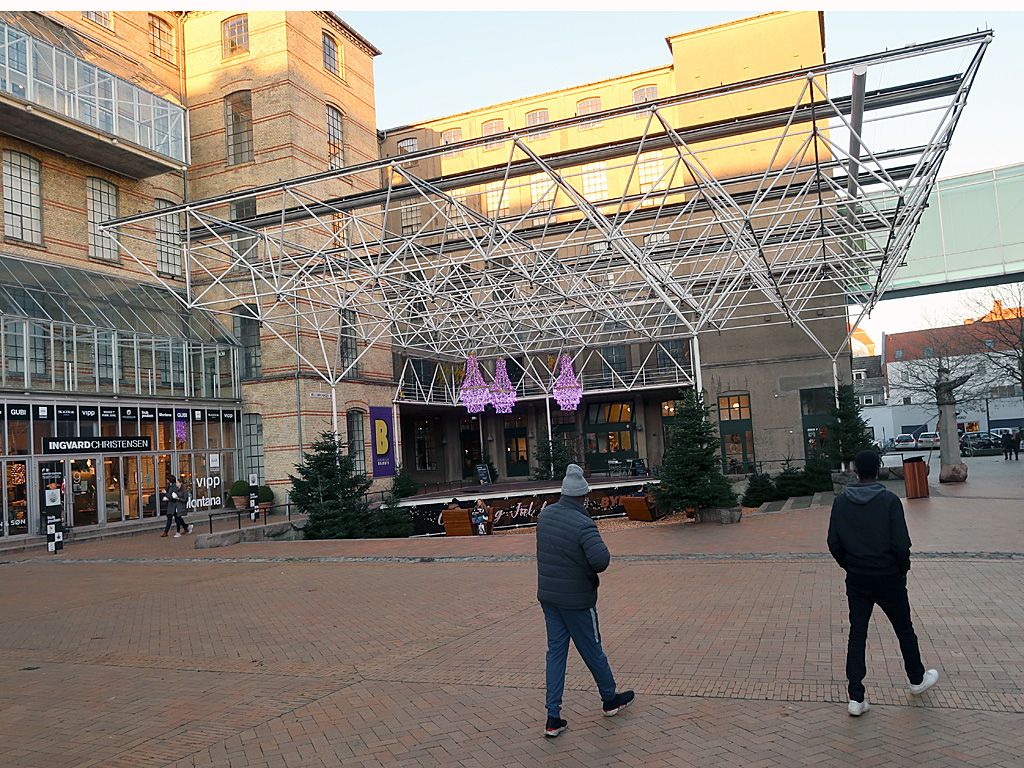
The former cloth factory Brandts officially opened as a cultural centre in 1987. It is a fine example of industrial buildings transformed to house art, culture, cafés and shops. The concept has proven sustainable and continously able to embrace new functions.
In August, it was great as usual to follow Odense's documentary film festival, off, at Brandts. In the cinema, every other seat stood empty, the corona-inspired option of streaming films was a timely innovation.
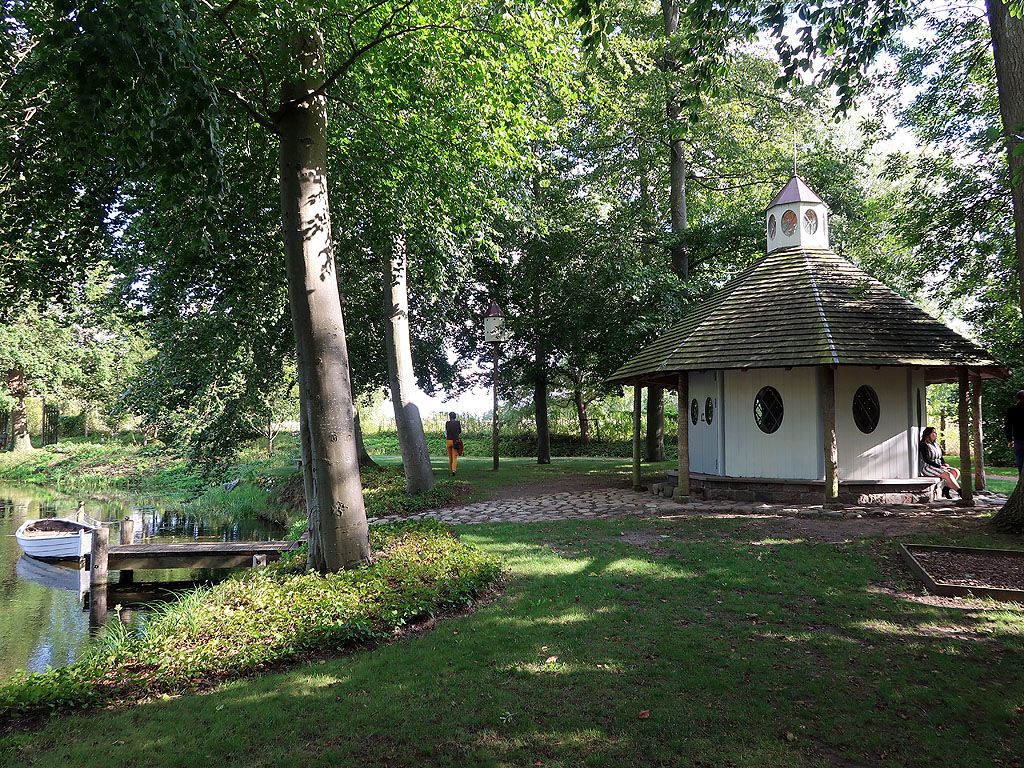
Johan Bülow laid out Sanderumgaard's Romantic Garden in English landscape style in the decades around 1800. It has been recreated by the estate's current owners Susanne and Erik Vind supported by private foundations. The founder was inspired by the ideals of the Enlightenment, Romanticism and Freemasonry. Some of the leading Danish intellectuals and artists of the time visited the garden, which was depicted by among others the renowned painter C.W. Eckersberg.
During the corona crisis, we and many others experienced the spirit of nature here.
Nordfyn Municipality
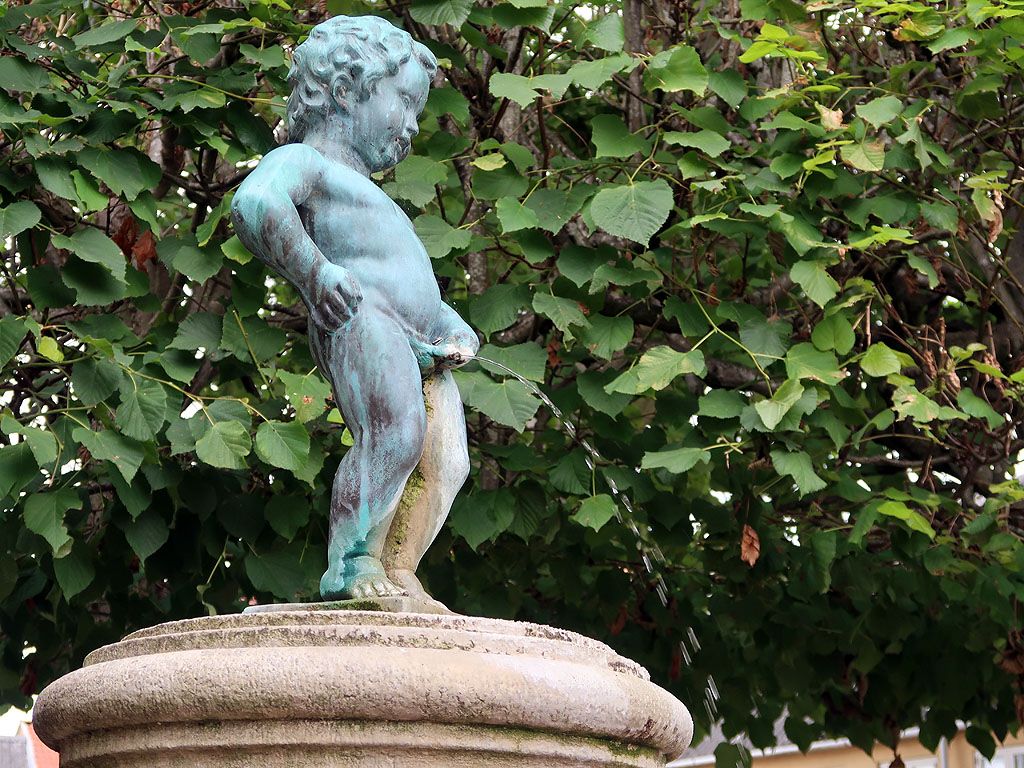
The poetic version of the story of Manneken in Bogense is that an infant boy was found abandoned on the ferry from Jutland and adopted by a local woman. After a stay abroad, the adult Willum Fønns returned and donated the statue to the town, it was unveiled in 1934. There are more prosaic and probably more true versions of the story.
Like his twin brother in Brussels by Hieronimus Duquesnoy, Bogense’s Manneken is dressed for festive occasions. We met a friendly woman with a watering can who helped the little guy keep his jet going.
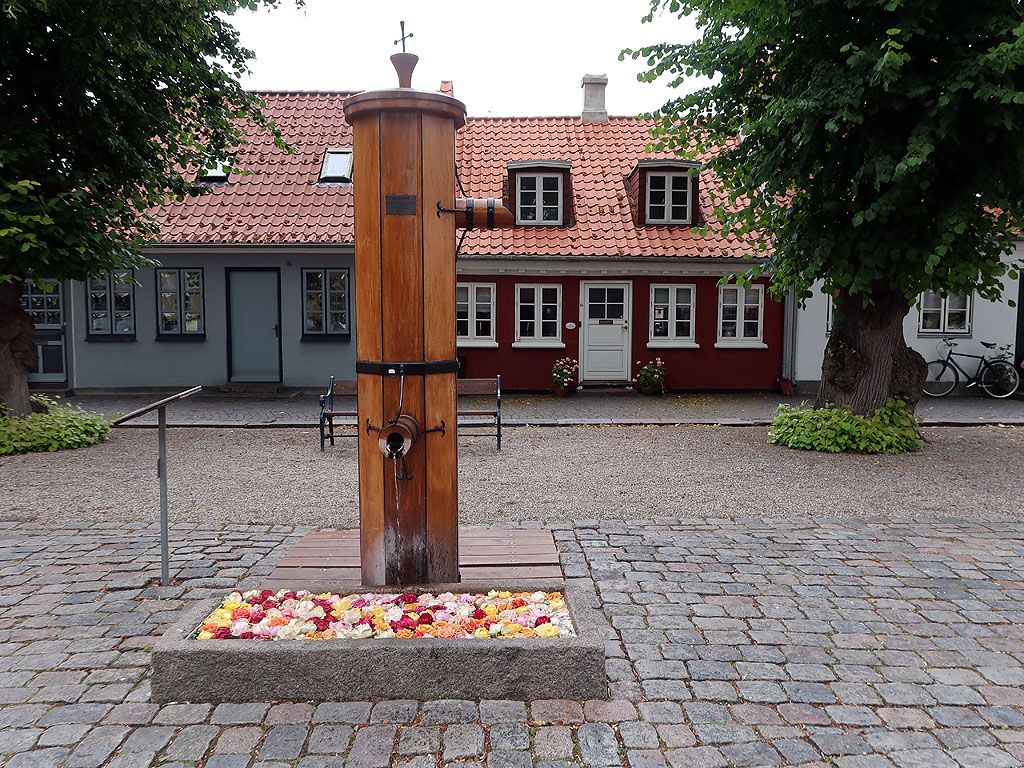
A walk around Bogense offers many well-preserved buildings and urban environments. The square with the reconstructed water pump, the cozy houses and the church with a sea view, which is dedicated to the sailors' guardian Sct. Nikolai, is a fine example.
In 2020, the annual Rose festival was replaced by more corona-conscious activities. The tradition of flower decorations in open spaces was maintained.
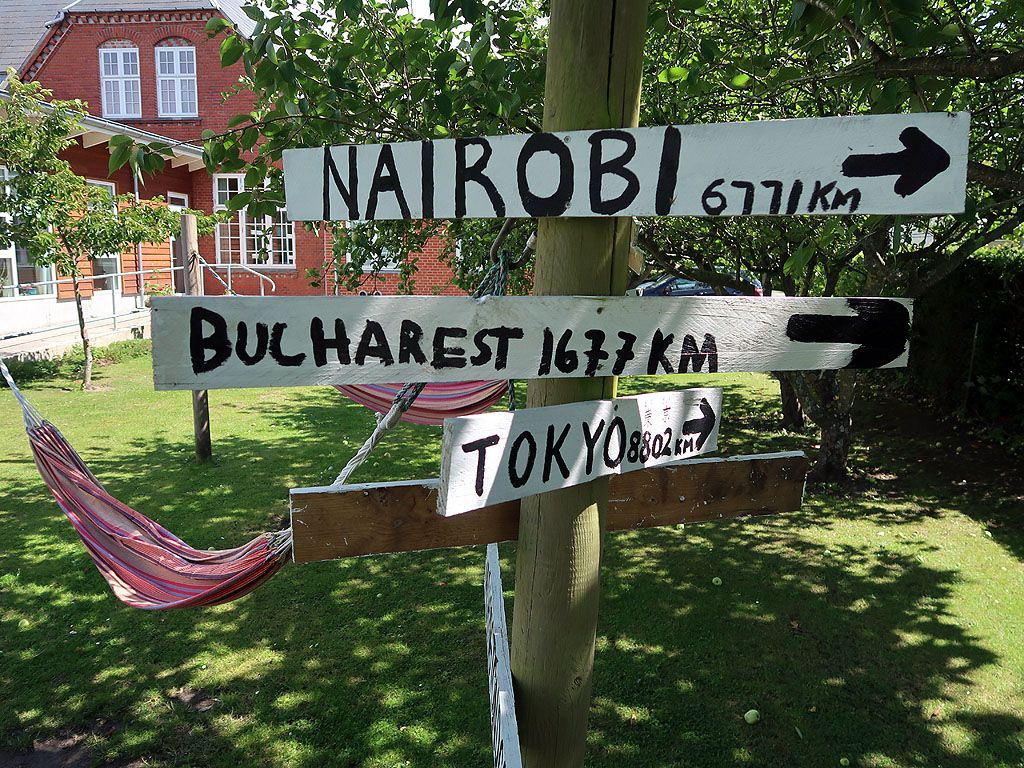
Nordfyns Højskole is strongly rooted in international relations. The year 1967, Japanese Tadao Chiba took the Trans-Siberian Railway to learn about Danish democracy and welfare. He fell in love with the folk high school and with Helle, whom he married. In the 1980s he began to teach Danish boys in a school in the village Harritslev. In 1990, it was approved as a folk high school with a Danish-Japanese profile and many students from Japan.
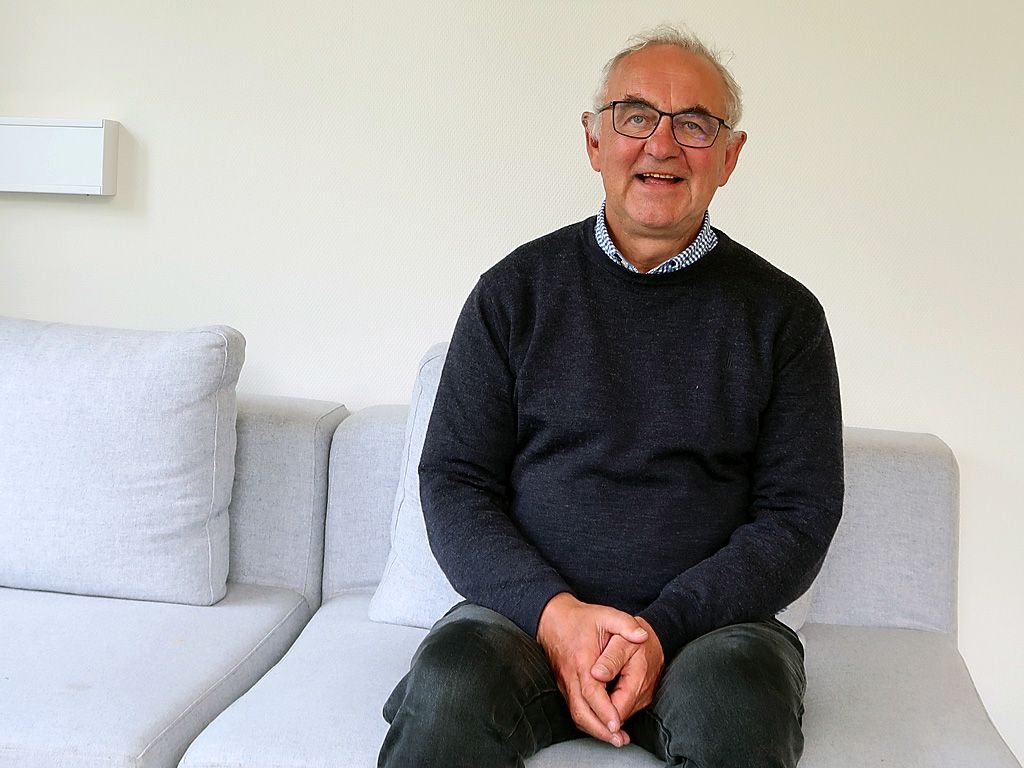
Mogens Godballe told us about the school’s history. He was appointed as its headmaster in 2005 because of his experience from the nearby Brenderup Folk High School.
During the first wave of the corona crisis, all folk high schools had to close down."The aid packages from the state helped us, and after reopening we run a good folk high school again despite the need to keep a distance," Mogens said in July.
He has decided to stop in order to have time to write and to promote Danish folk high school ideas internationally. In the latter half of 2021, he will go to southern China to help establish a kindergarten college. Thomas Trier, who is experienced in folk high school and theatre, will be his successor.
We are happy to be connected to Nordfyns Højskole, where Lars has lectured on Danish culture for Chinese and Danish students.
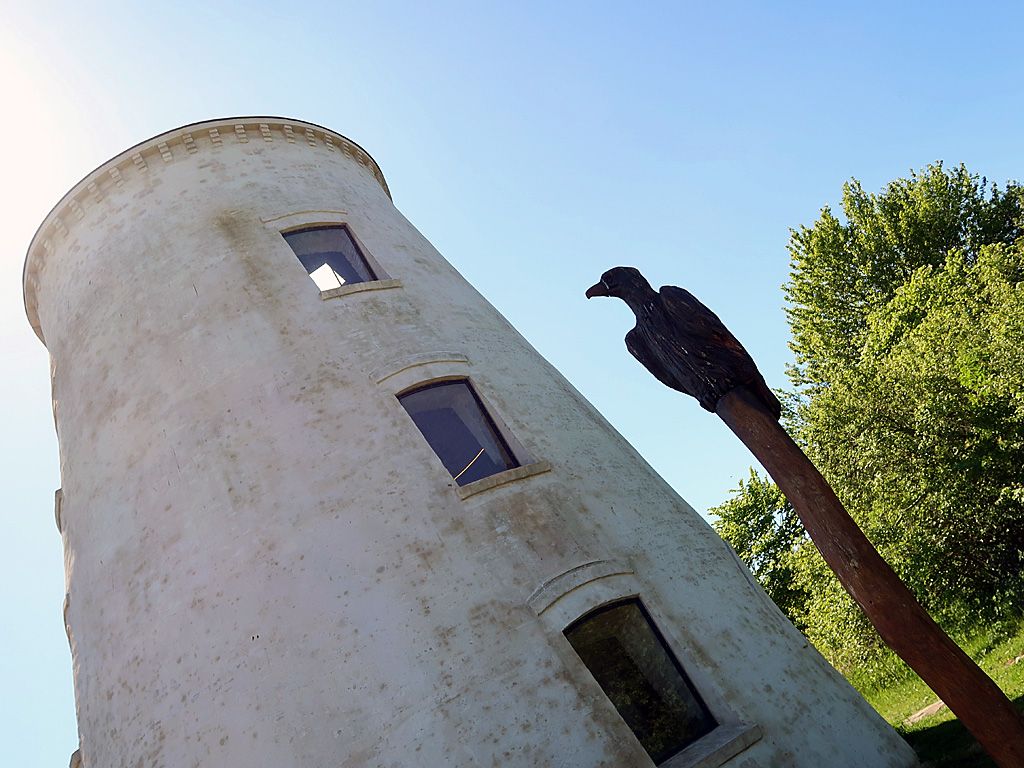
In 2011, Aage V. Jensen Nature Foundation bought the dammed and cultivated Gyldensteen Strand to carry out extensive nature restoration. When the dikes were removed after more than 140 years, a salty coastal lagoon and a fresh meadow lake emerged.
The project produces knowledge on how flooding of coastal areas caused by climate change can be managed. It is closely followed by researchers, birdwatchers, students and school children. Posters in a nature room tell about the project.
A mill, which previously pumped water from the area, has been preserved as one of several bird towers with a nice view.
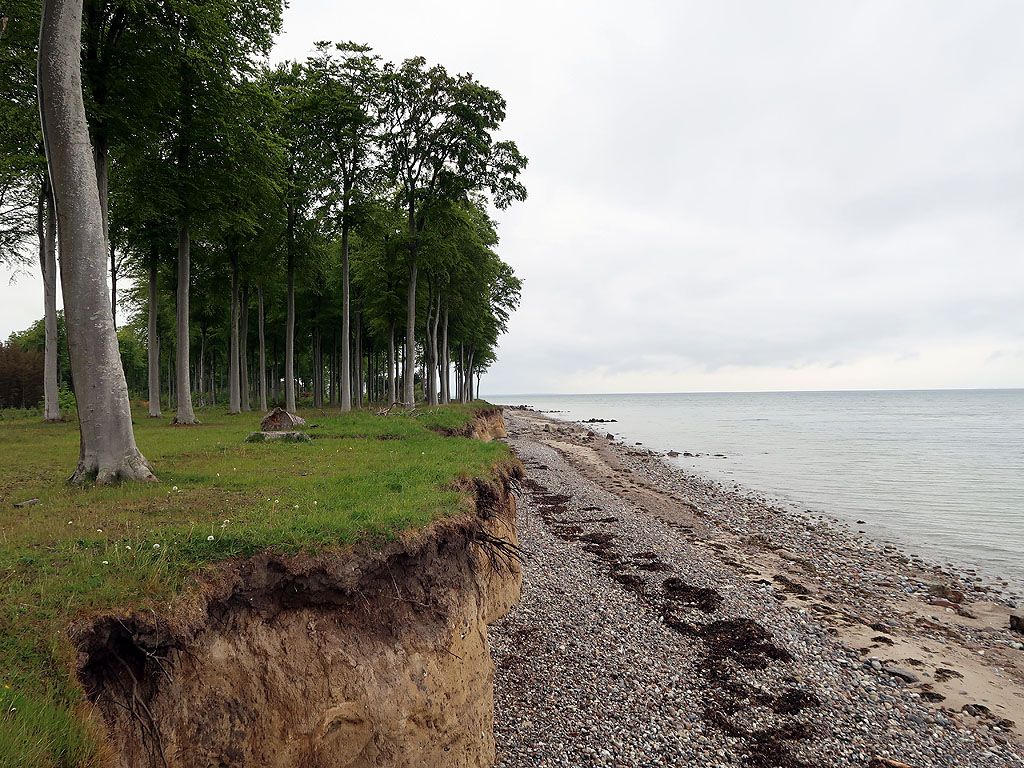
Flyvesandet is Funen's northernmost point. Here we went for a walk in the scent of wild garlic between more than a hundred years old upright beeches and several hundred years old crooked oaks. We met two fly fishermen who both told us, they had been very close to catching a trout.
Nordfyn Municipality works on establishing a nature park based on its long coastline.
Middelfart Municipality
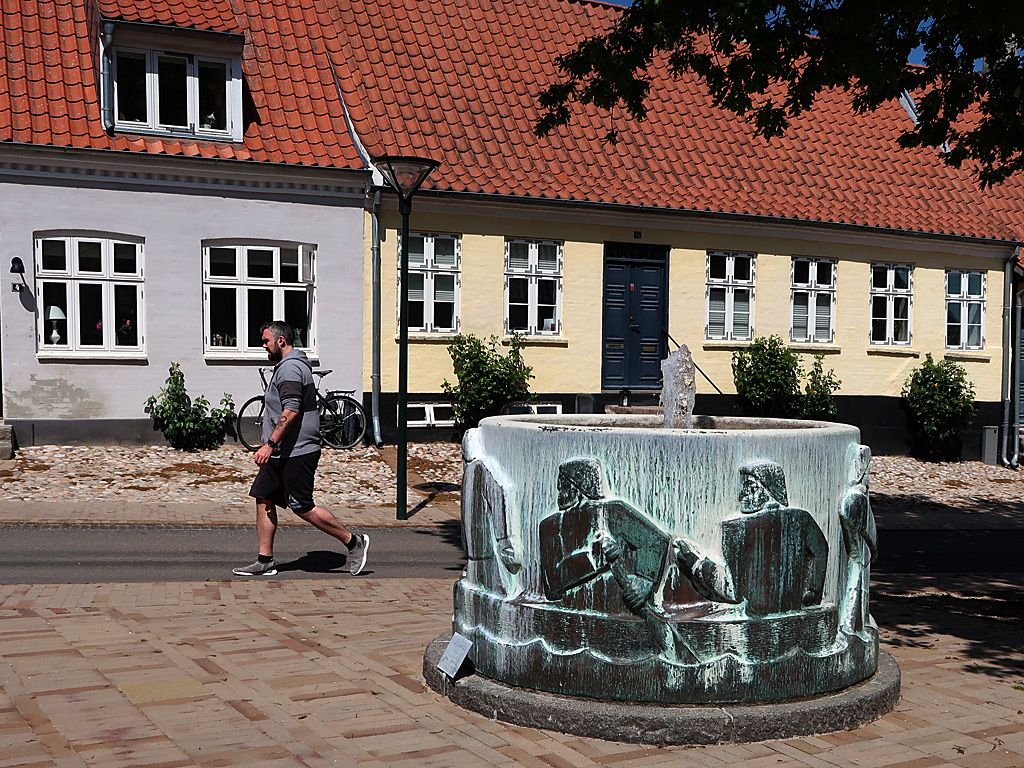
The well depicting porpoises was created by the sculptor Hans Olsen and unveiled in 1957. Hunting porpoises was important for Middelfart from the Middle Ages to the end of the 19th century, when petroleum replaced animal oil in lamps. During the two world wars, the tradition was resumed. A guild of hunters drove the animals from the Little Belt into a fjord, where they were slaughtered. Porpoises were protected in 1967.
We are sometimes joined by the small, snorting whales when we row our kayaks near Hanne's family holiday home on the island Samsø. We think that the interest is mutual. In Middelfart we saw a group near the Old Little Belt Bridge. It is a breath-taking experience.
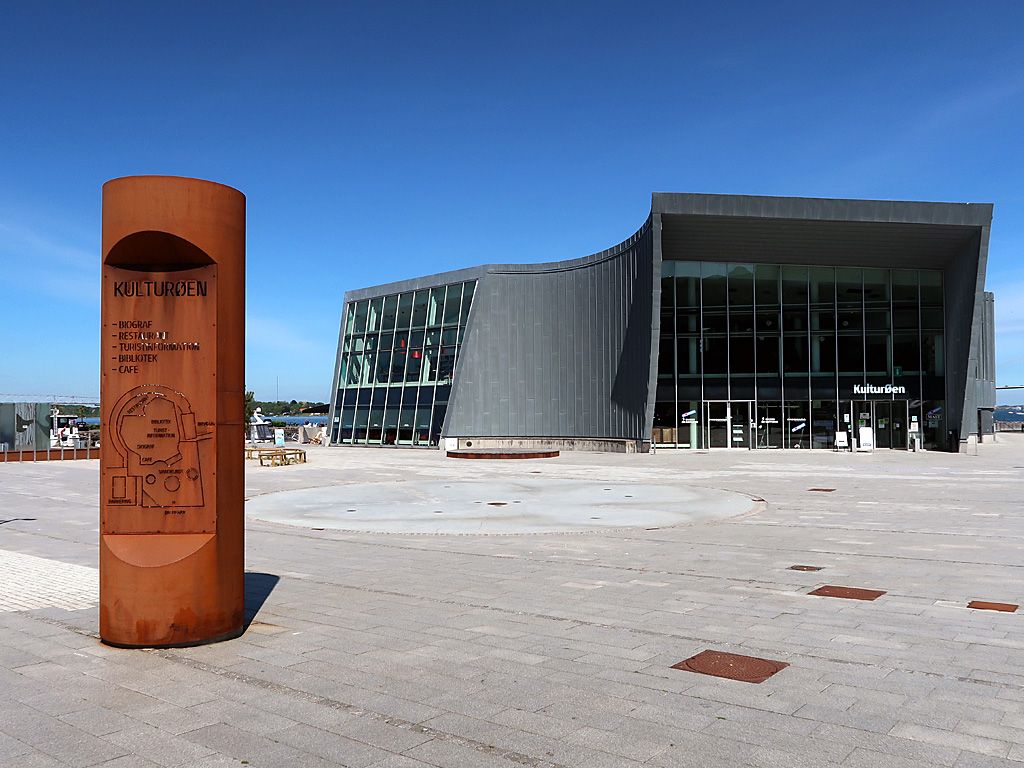
The cultural centre Kulturøen is built on an artificial island between the Old and the New Little Belt Bridge. The iconic building, designed by architect John Lassen, houses a library, a cinema, a restaurant, meeting rooms and other facilities.
In September a climate meeting, was held on the island. Middelfart Municipality and the Region of Southern Denmark intend to make this a recurring national event. The purpose is to create solutions for the climate challenge. This year's theme was "Climate action now". We followed some of the promising debates in a corona-friendly transmission via the Internet.
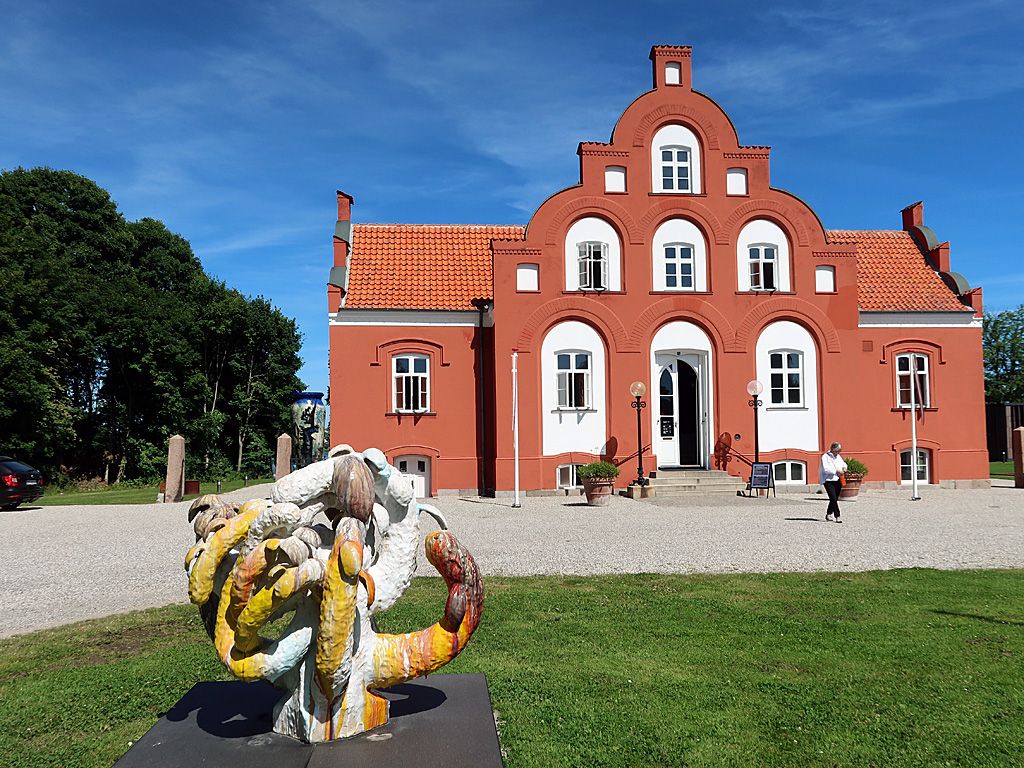
Grimmerhus was created as a widow's residence for the nearby Hindsgavl Castle by the architect Johan Daniel Herholdt. The villa in historicist style from 1857 has had several functions. The ceramics museum opened in 1994, a predominantly underground extension was added in 2015.
Clay has a large collection of Danish and international ceramics. In July, we saw works by the painter Carl-Henning Pedersen. His imaginative worlds of humans and animals also convince as pottery.
The museums, we visited during the late summer, had many guests who came in at half price supported by corona aid from the state. In the autumn, museums reported a decline in visitors. In December, Danish cultural and leisure life like many other sectors of society had to shut down again.
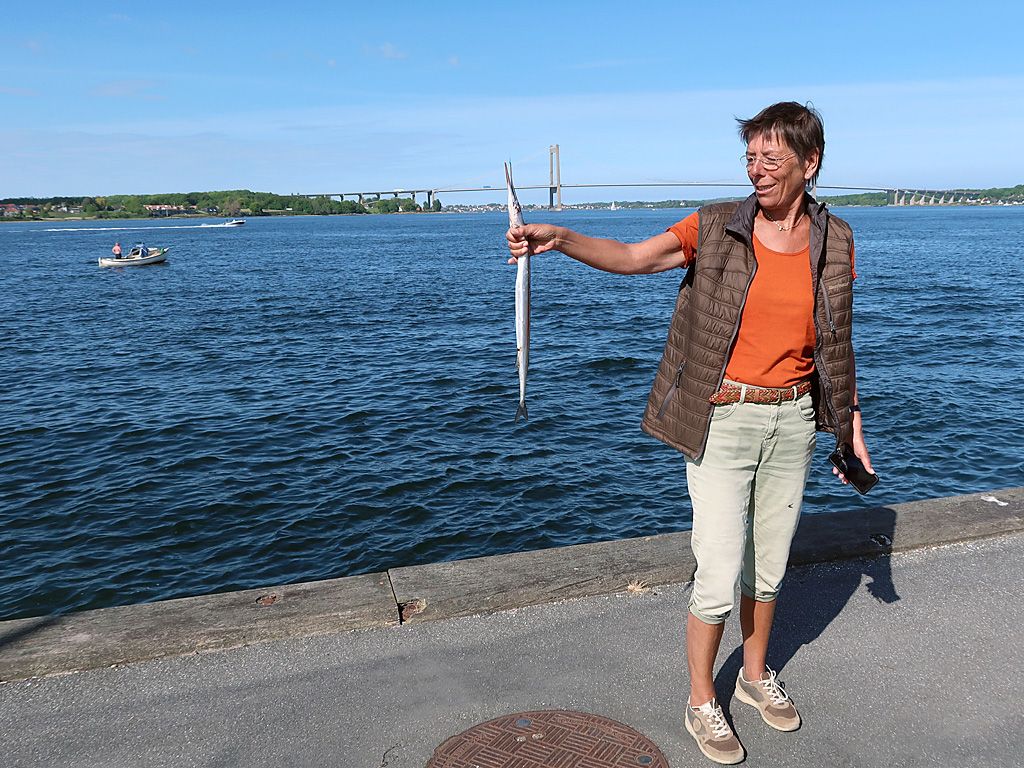
In May, Hanne managed to catch one of the lively garfish that attract anglers to Middelfart's piers every year at that time.
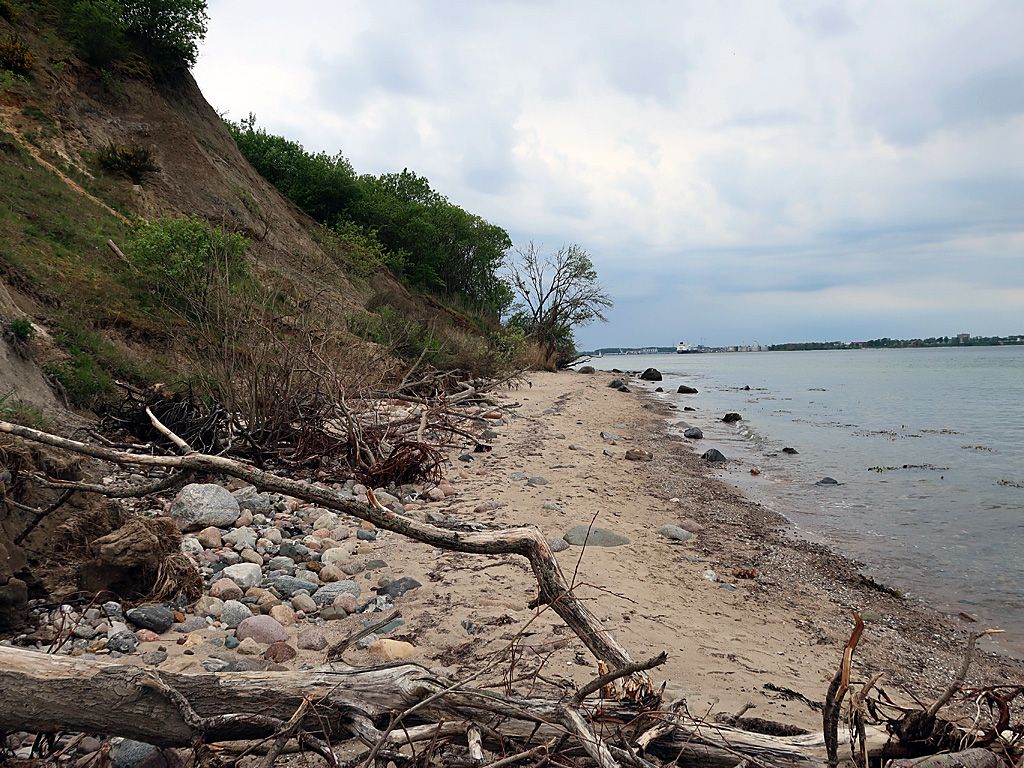
We walked along the cliff in Røjle, where plastic clay flows out on the beach. Lars found the space that was used for primitive camping, when he was a teacher at the now closed folk high school Brogården in nearby Strib.
Naturpark Lillebælt was created in a collaboration between Kolding, Fredericia and Middelfart municipalities. It is held together by the belt and works for sustainable development of the area.
Assens Municipality
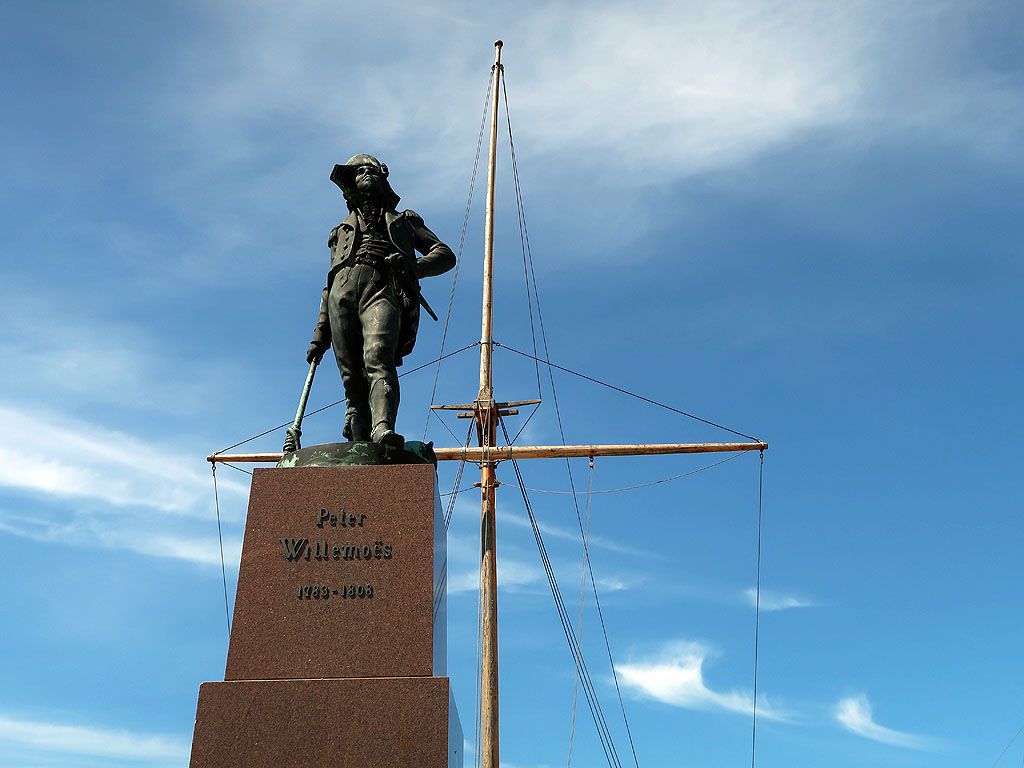
Only 17 years old, Peter Willemoes was head of a battery with a crew of 129 men during the battle with an English fleet in Copenhagen 2 April 1801. He fell in combat 22 March 1808.
Willemoes was honoured in his day and still is in his hometown Assens, where he stands on the harbour. The statue is not as monumental as his English counterpart Admiral Horatio Nelson's tall pillar in Trafalgar Square. In comparison, sculptor Christian Carl Peter's depiction of Willemoes, which was set up in Assens in 1902, is an almost realistic portrait of the young Danish hero.
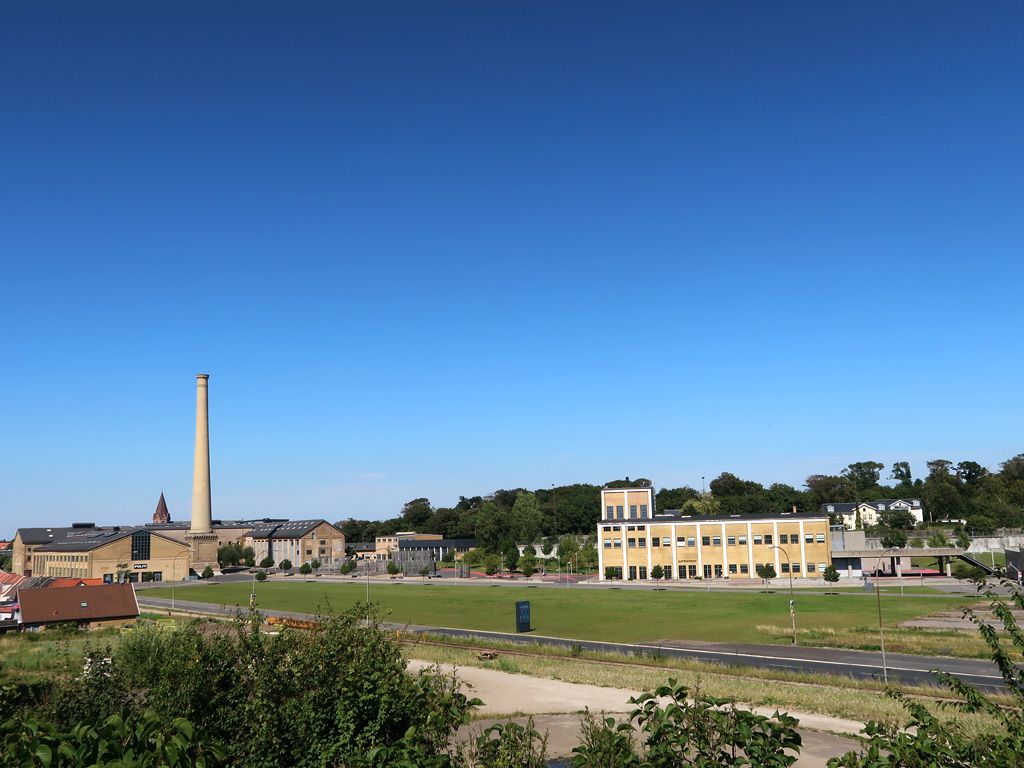
Assens Sugar Factory was built outside the town near the railway and harbour in the late 1800s, it closed in 2006. The renovated buildings with modern additions house the City Hall and Arena Assens with sports, leisure and cultural facilities. The former town hall is to be transformed into a modern library with meeting rooms.
The picture was taken from the nearby Earth Basins, where mud from sugar beets has raised a beach meadow 10 meters above sea level. The site has developed into a fine natural area with many species and views of the town and the sea.
Assens Municipality plans to establish a National Centre for Coastal and Angling Tourism based on its good fishing spots.
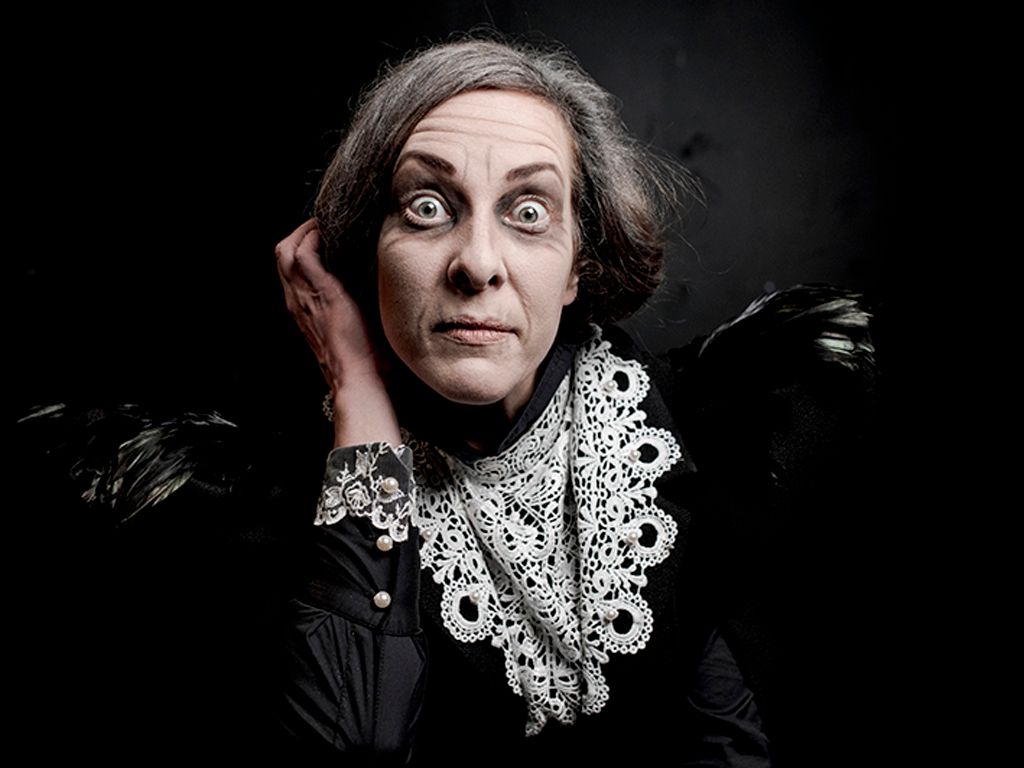
In January 2020, Vestfyns Teater presented the play "What now Europe?" by Mungo Park in Arena Assens. The woman Europa celebrates her birthday in a cottage with relatives. As a young princess, she was abducted by Zeus in the form of a bull and the continent was named after her. In her old age, she may suffer from dementia.
The play tells about current challenges for the EU. Our interpretation is that the author Vivian Nielsen optimistically lets Europa be reborn as the goddess of love Venus.
The chairman of Vestfyns Teater, Bent Damsbo, was concerned when ccovid-19 led to cancellations in the spring. However, ticket sales for the autumn went well and the performances were completed with an empty seat between family groups. Vestfyns Teater is run by volunteers and has limited expenses, so it will survive the corona challenge.
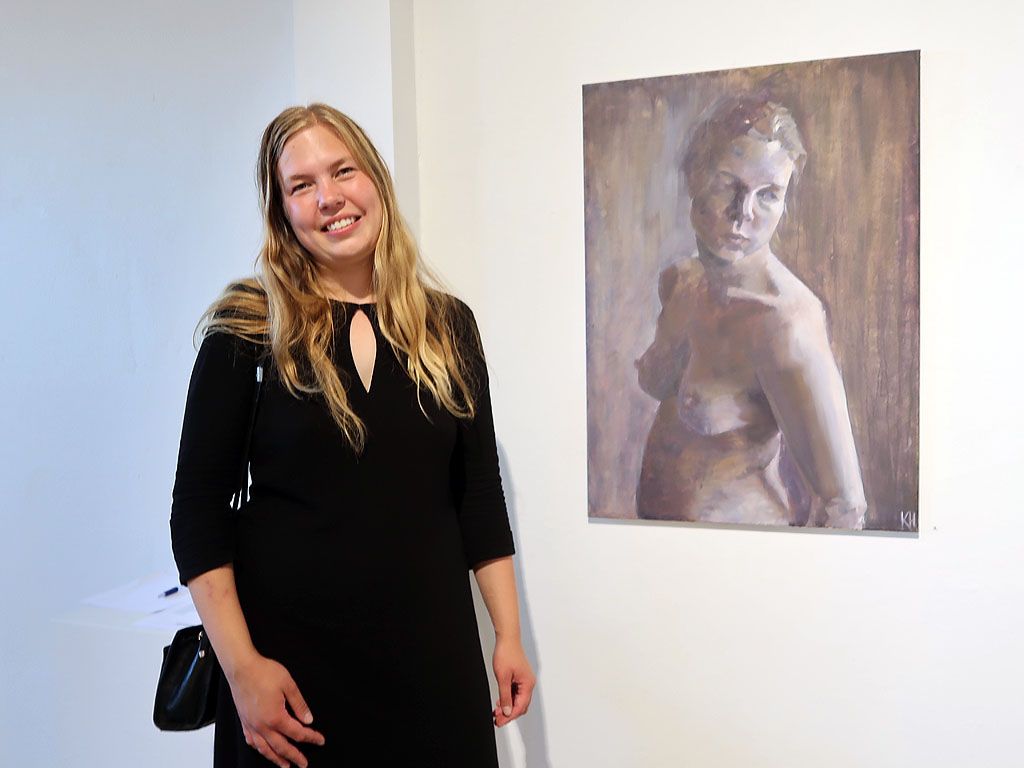
We met Kamilla Herskind and her boyfriend Jonas Balsløv at the island Tåsinge, where they live and have workshops in three caravans at a campsite. She is an artist and a tailor, he is a carpenter and an engineering student. In August, Kamilla invited us to a vernissage at Tobaksgaarden in Assens. She stands by a self-portrait.
Tobaksgaarden is a multifunctional culture house situated in the buildings of a former tobacco factory. When we visited the house in August, it had reopened with exhibitions, cinema performances and outdoor concerts after the spring lockdown.
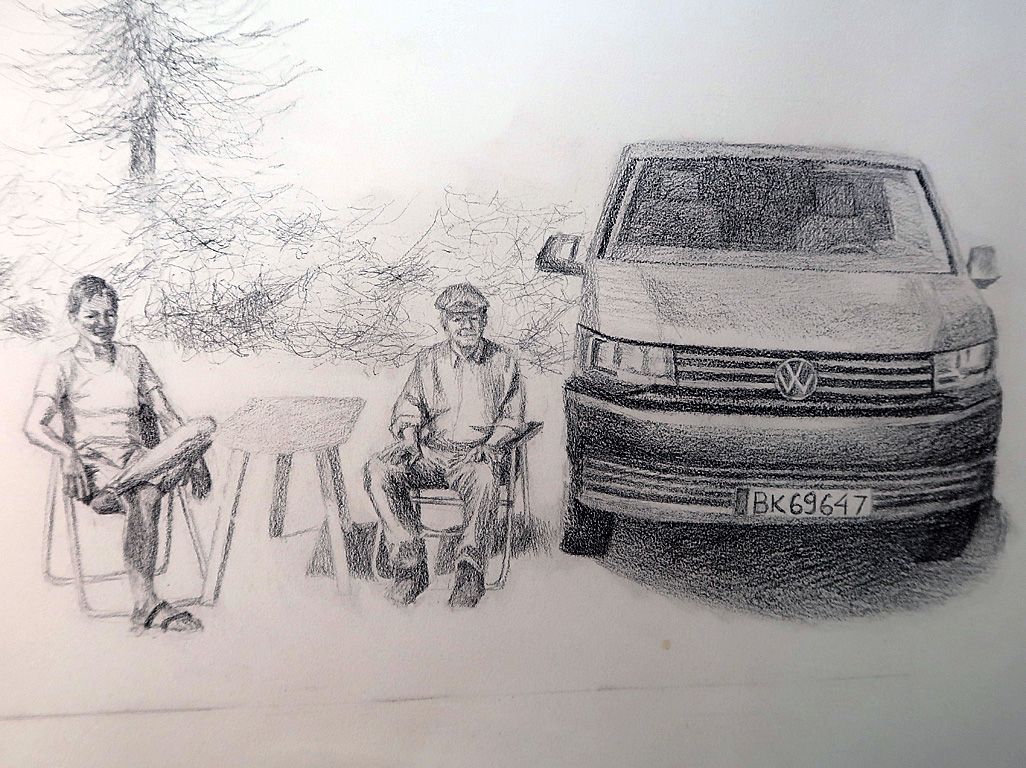
When the pandemic hit Europe in the spring, Kamilla had exhibitions canceled in Rostock and Copenhagen. It inspired her to make "corona sketches" of memorable situations based on people's photographs for a fee. We asked her to interpret our camping life.
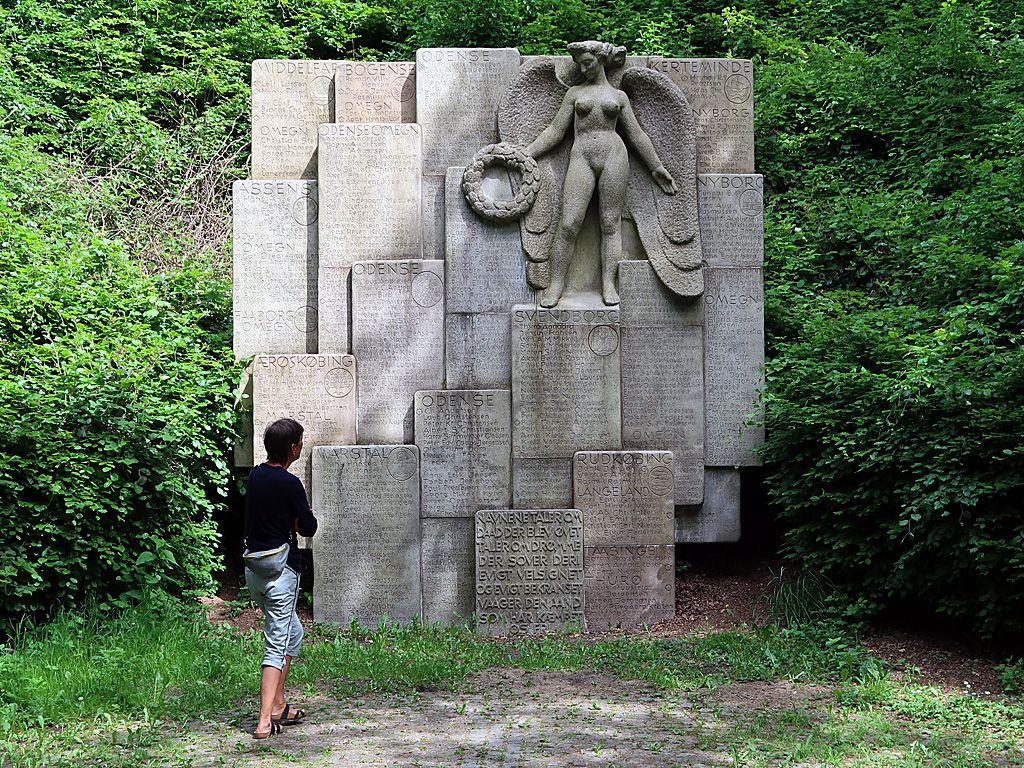
With its 131 meters, Frøbjerg Bavnehøj is Funen's highest point, which over time has been a favourite place for sports events, public meetings and open-air theatre. In Lars' childhood, it was also a favourite destination for his family's Sunday excursions. They included a story about Danish history from the abolition of serfdom for farmers to World War II based on the area's memorials.
The monument to the victims from Funen during the German occupation of Denmark 1940-45 was created by the sculptor Gottfred Eickhoff.
As a reward for our patience we children were allowed to roll down the hill. At that time, there were apparently no grazing sheep and manure.
Faaborg-Midtfyn Municipality
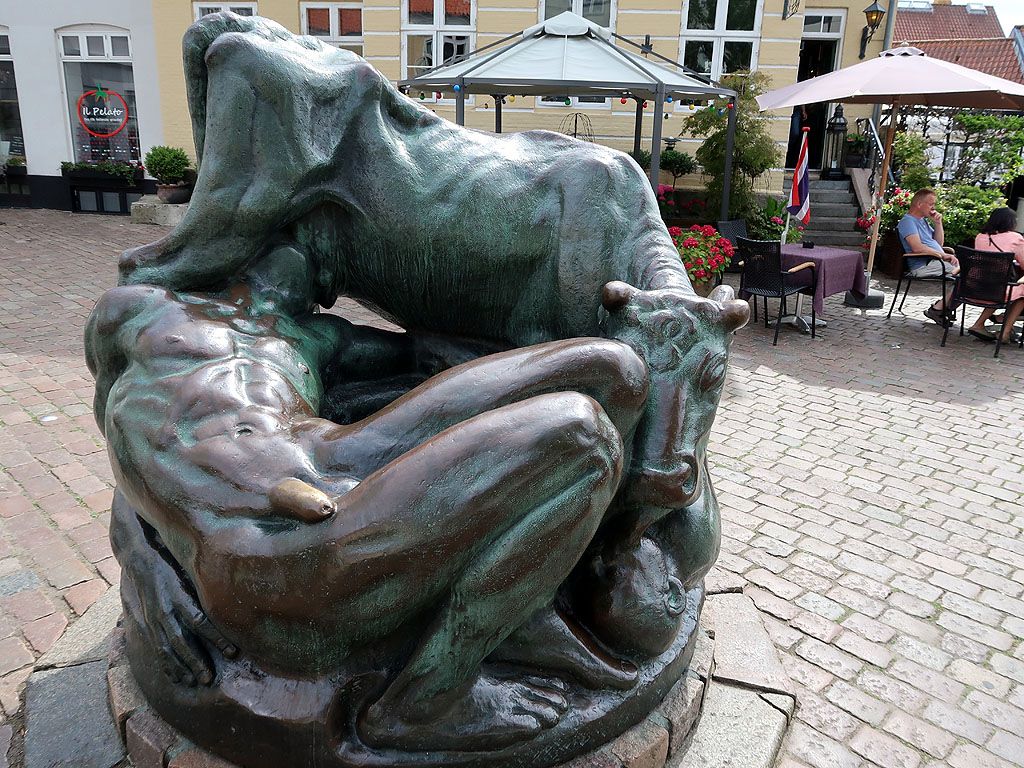
The sculptor Kai Nielsen's Ymir’s well tells the creation myth of Norse mythology. The primeval giant Ymir drinks from the cow Adhumbla's udder, while the cow shapes the boy Bure by licking a salt stone. Ymir was killed by three gods that created the cosmos from parts of his body.
The artwork with the mighty naked man caused indignation and debate in Faaborg when it was unveiled in 1913.
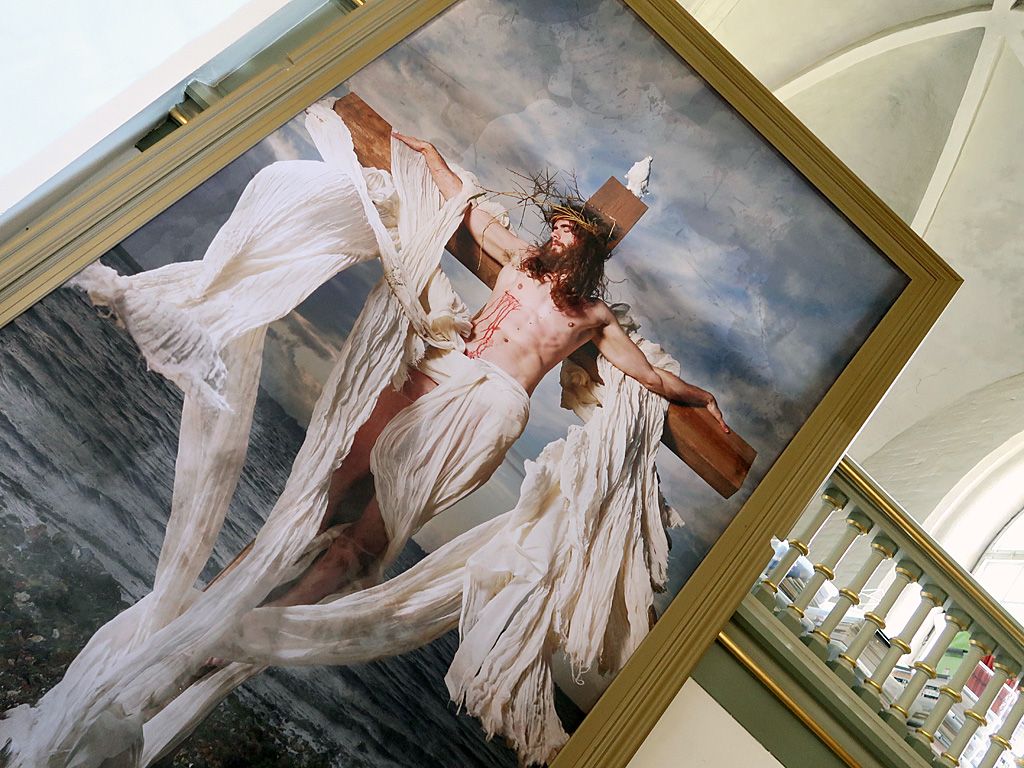
Art and nudity still trigger debate in Faaborg. An exhibition in the church demonstrated this clearly. Local designer Jim Lyngvild had produced seven large photographs with reinterpretations of biblical stories.
The exhibition lasted until the autumn of 2020, when the building was to be restored. In September, a regional newspaper reported a discussion between Lyngvild and Bishop Tine Lindhardt whether God needed a marketing manager. They did not come to an agreement on this question.
The number of visitors during the summer was estimated at 50,000, and art in the church was a controversial theme in the election of the parish council.
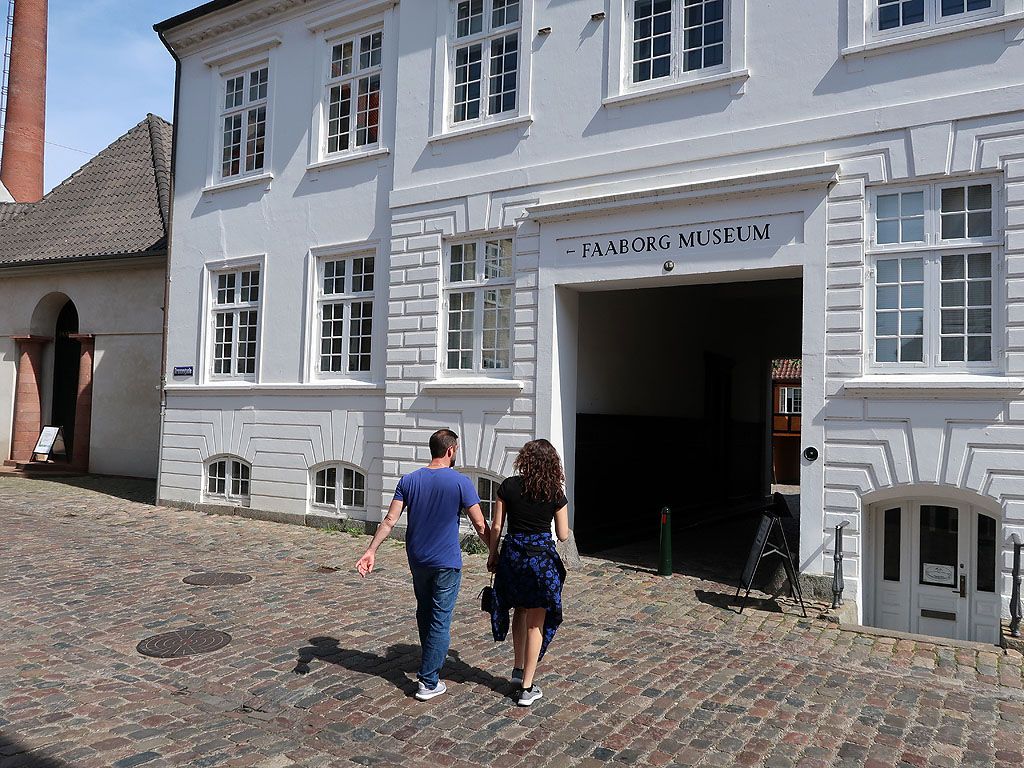
The museum was founded in 1910 by manufacturer Mads Rasmussen, who let the group of Funen Painters choose works for its exhibition. Architect Carl Petersen's building with additions, architect Kaare Klint's chairs and the varied rooms with art form a whole characterized by careful attention to detail. The place is a worthy setting for the artists who in 1907 sparked the "peasant painter dispute" by showing Funen's nature and everyday life of farmers in paintings.
We visited the museum in July, and saw an exhibition of delicate watercolours by the female artist Anna Syberg.
Faaborg Museum is about to be renovated and expanded. The city's cultural history museum Øhavsmuseet will permanently move to premises at the harbour in 2021.
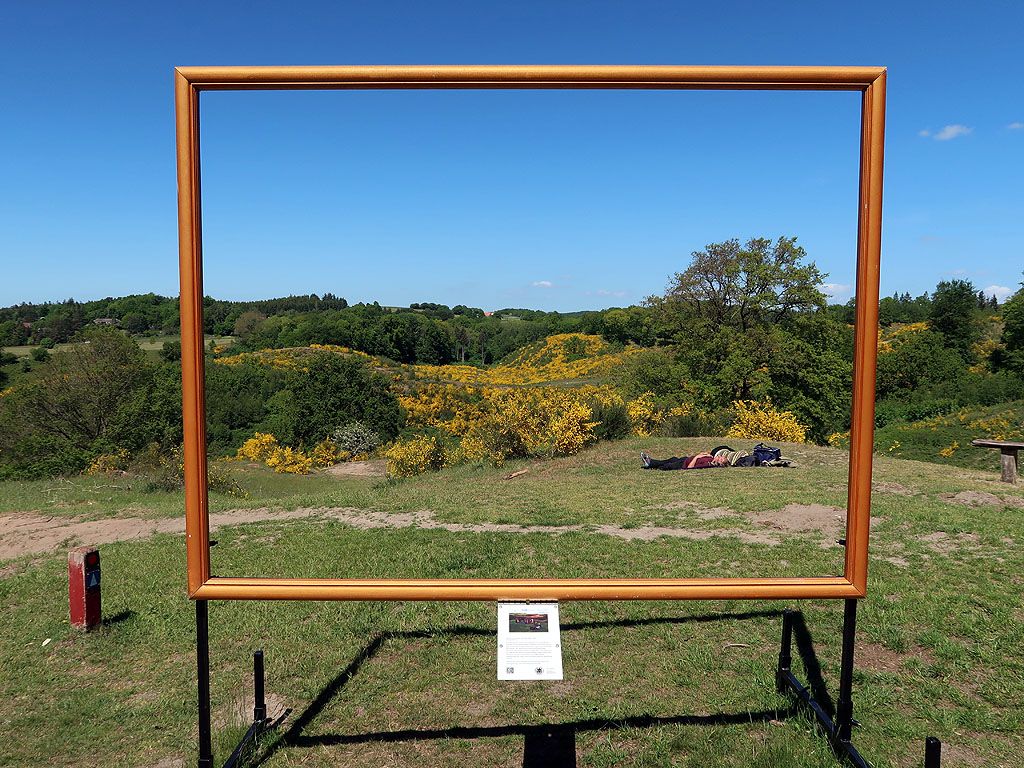
Some of the Funen Painters’ motifs in the town and the surrounding nature have been framed. Here the site of Fritz Syberg's famous painting with a group of young men and women dancing in the sunset. In the year 1900, when Syberg caught the view, the hills stood sharply with no trees. The work can be seen at Faaborg Museum.
A couple of hikers rested in the frame, when we found it.
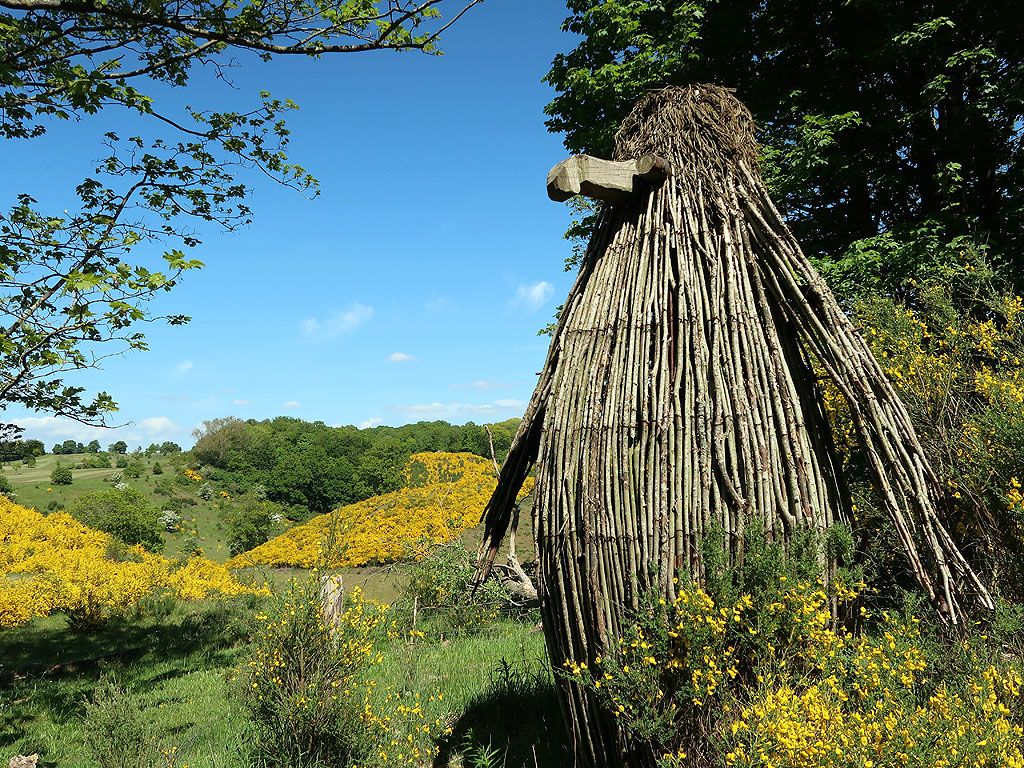
The scientific explanation for Funen's landscapes is that the ice age moved around layers of soil and created hills and valleys. In some places, there are also more imaginative tales. According to legend, the hills of Svanninge Bakker and Bjerge is earth left over when the Troll Finn dug out a nearby lake for the god Odin's wife Frigg.
Here the Troll enjoys the result of his work, as the artist Thorkild Hoffmann Larsen has seen him. Perhaps it was proud Finn, who first named the hills the South Funen Alps.
Svendborg Municipality
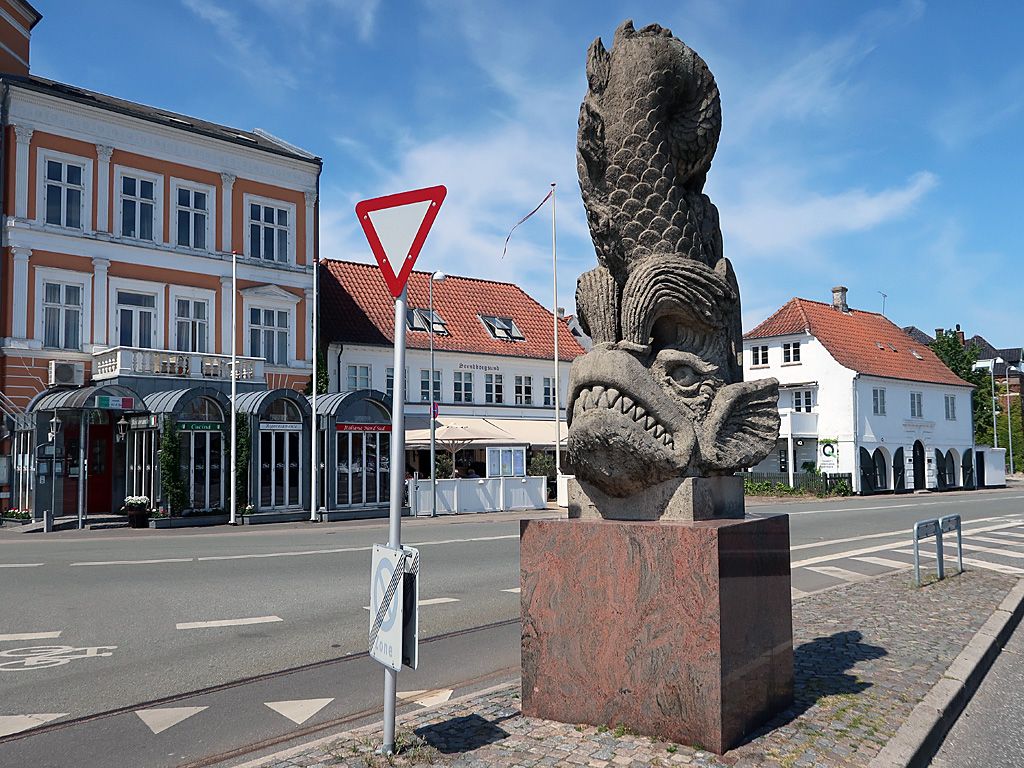
The Czech sculptor Frantisek Balek's sculpture the Whale Fish is a copy of the galleon figure from a vessel of the same name. The brig functioned for many years as a stationary school ship in Svendborg.
The original was made by the woodcarver Henrik J. Møen in 1850, Balek's version was unveiled in 2003.
The monument shows respect for Svendborg’s maritime traditions, and the fantasy animal with features from both whale and fish is well placed by the harbour.
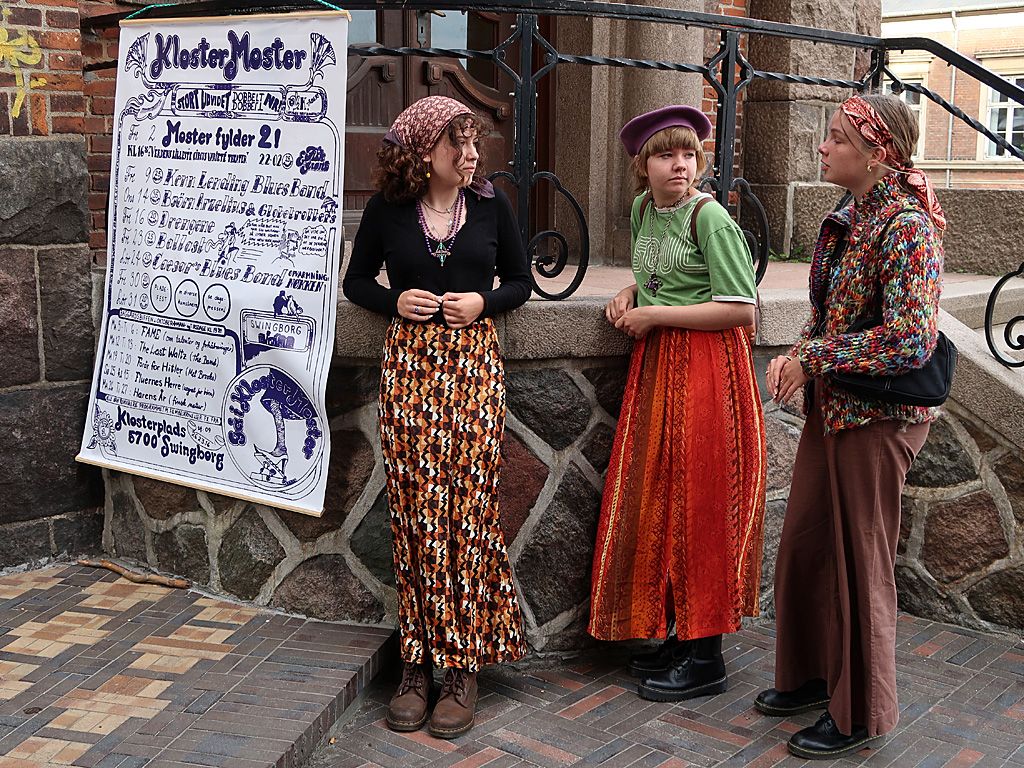
Svendborg is creative, you feel it by simply taking a walk in the town. When locals explain why, they mention waves of enterprising newcomers creating schools, a theatre, a music venue, communes etc.
In September, we followed a city walk, where 65 young people and some adults performed seven scenes from half a century of youth life in Svendborg. Here a situation from 1977 in front of the then music venue Kloster Moster. A group of guests talk outside during a break in the music.
In 2008, Svendborg became the first Danish municipality in the international Cittaslow network. It emerged as an Italian struggle against multinational fast food and for slow local food. It has become an international movement that promotes quality in the lives of people and cities from a holistic perspective.
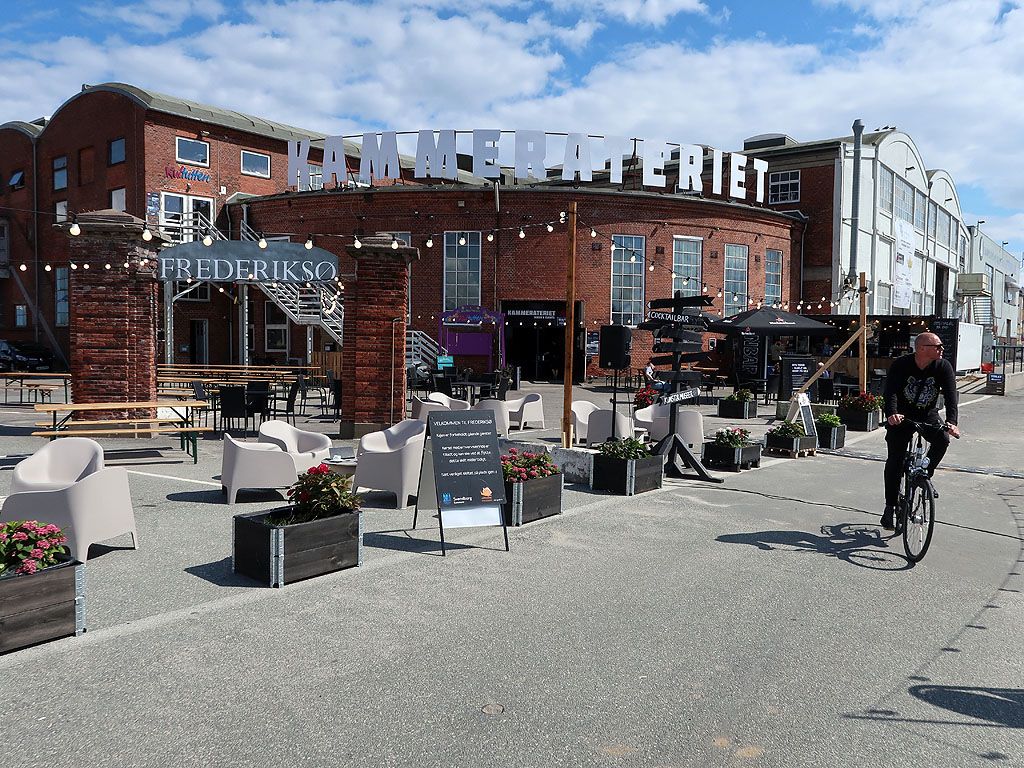
The promising mix of culture and maritime business on Frederiksø is probably the closest you get on Funen to creative environments in cities like Berlin and Amsterdam.
When we visited Svendborg in August, the dolphin Delle was an attraction with spectators both on land and at sea. We got a glimpse of the elegant animal from the dock.
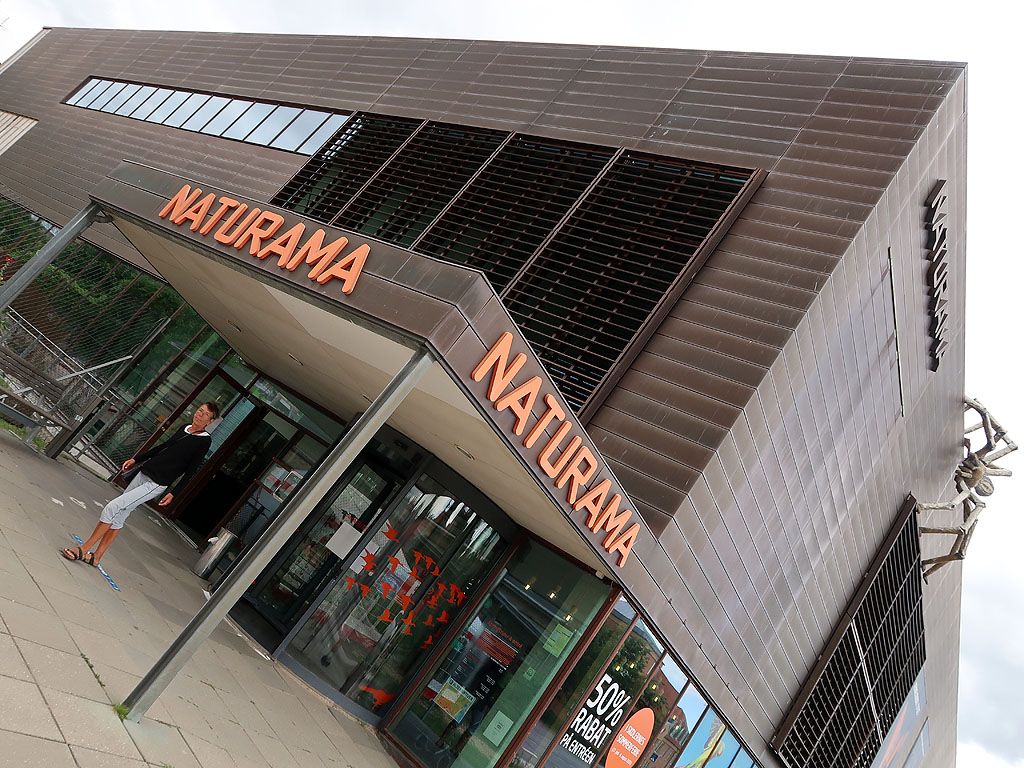
Svendborg's long-established zoological museum opened in new premises under the name Naturama in 2005. The architecture of the building supports the exhibition. The animals are located on three levels in the organically shaped central space. Water, land and air with sea animals at the bottom, land animals at the middle and birds at the top. The shift between day and night is marked by changing lights and sounds.
A nature guide gave a dramatic introduction to live animals in the style of Australian crocodile hunter and TV star Steve Irwin. When we later met him outside, the guide showed us an exhausted cormorant that was given a badly needed recreational stay at Naturama.
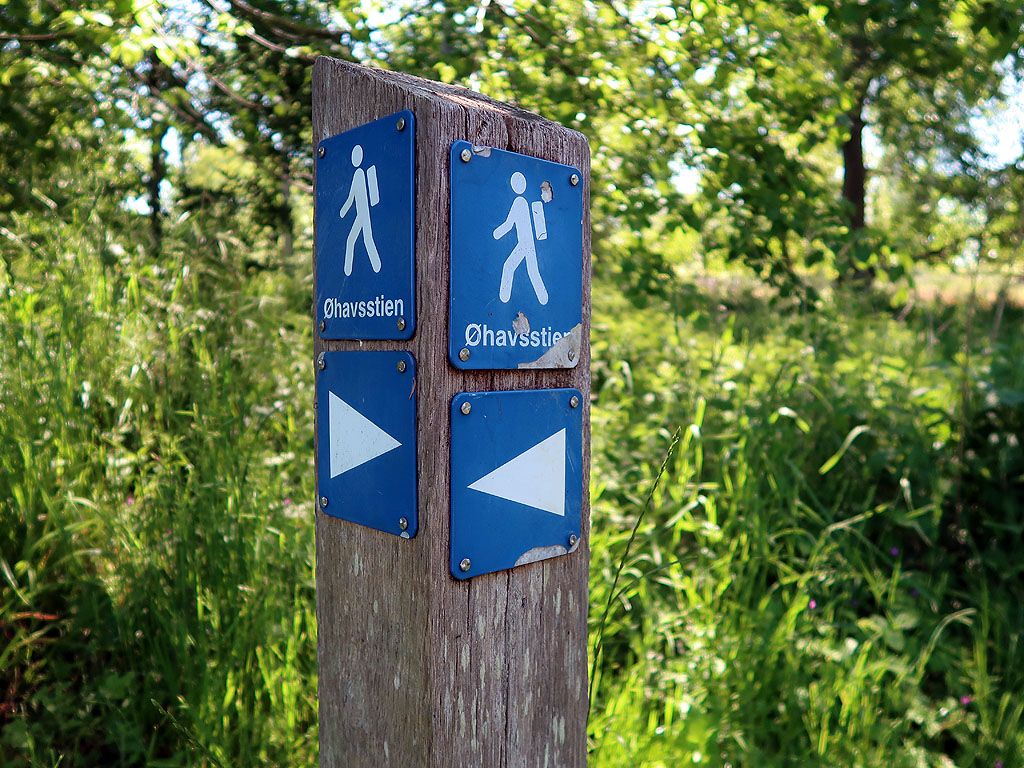
You can walk 220 kilometres if you take the Archipelago Trail in its full length. This time we walked 23 from Troense to Rudkøbing and pleasantly tired took the bus back. Along the way, we experienced idyllic Troense, stately Valdemar Slot, the place where the unhappy lovers Elvira Madigan and Sixten Sparre found death, Siøsund Broen, Langelands Broen and not least the nature scenery.
Svendborg, Faaborg-Midtfyn, Langeland and Ærø municipalities collaborate to make the South Funen Archipelago a UNESCO Global Geopark. The application deadline has been extended to 2022.
We visited the islands Langeland and Ærø on our tours of Denmark in 2017 and therefore skipped them in 2020.
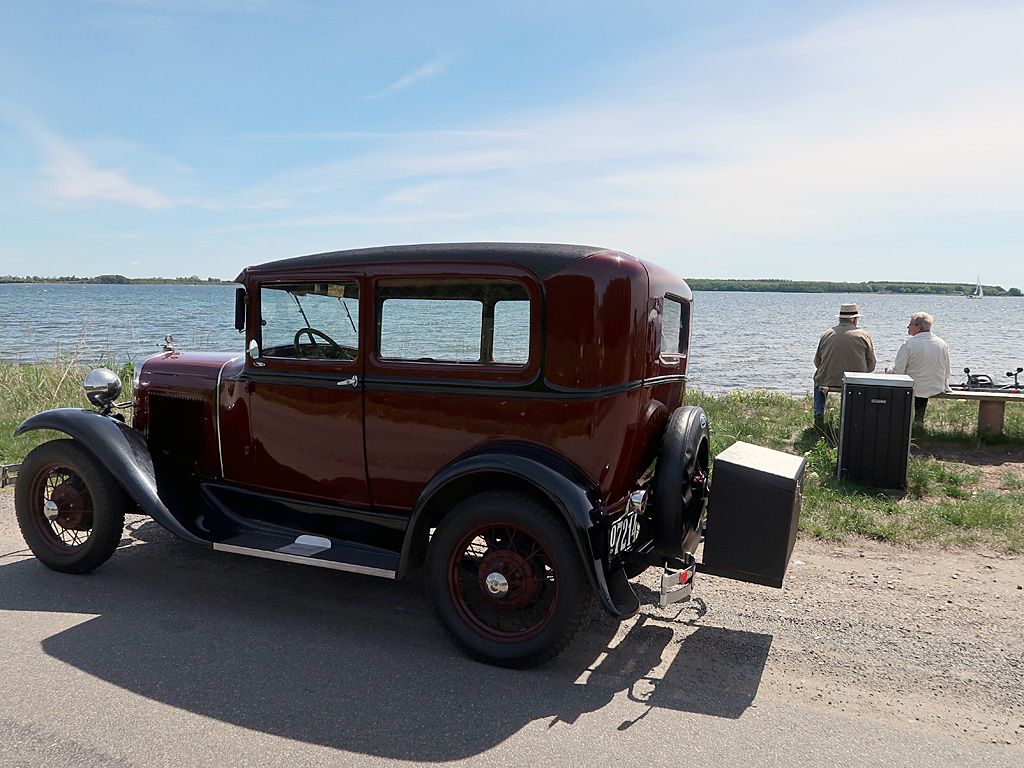
The beach near Lehnskov Estate is the southernmost point of Funen. It is marked by a bench where you can enjoy the sea view.
Nyborg Municipality
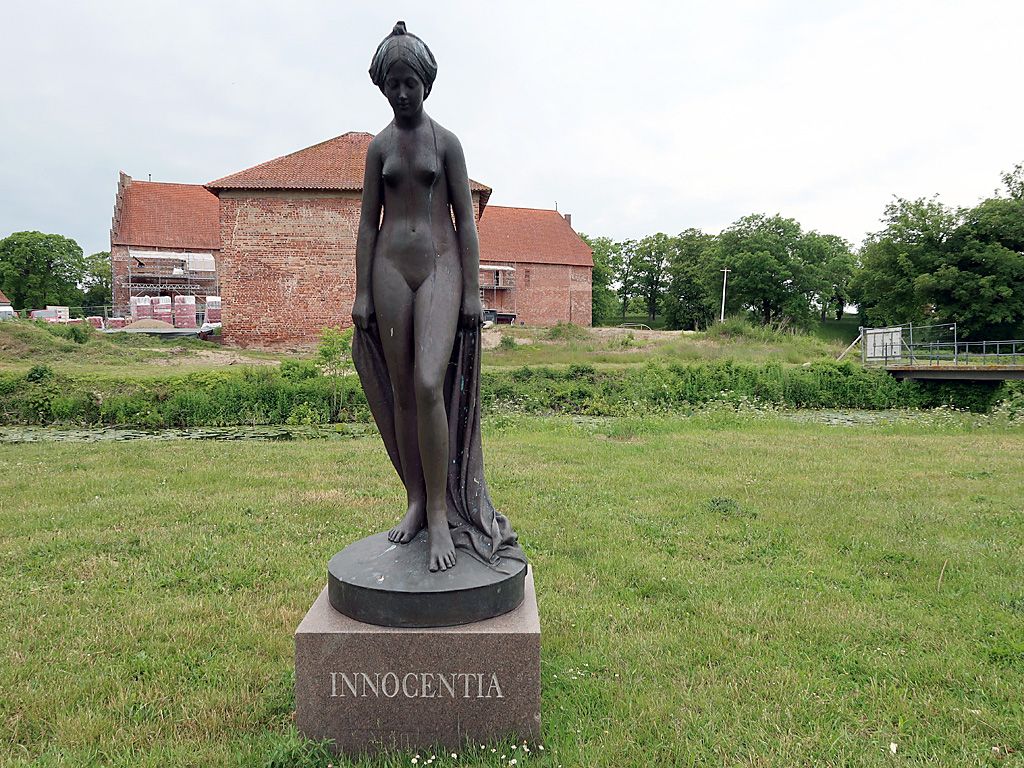
The innocent young woman with the robe was created by the sculptor Carl Aarsleff. He was born in Nyborg and moved to Copenhagen, where he had his artistic education and career. He became a professor at and director of the Academy of Fine Arts. The sculpture is a bronze casting made in 1990 from a plaster figure created around 1918.
Innocentia stands on the grass in front of the city's fine, listed library building with her back to Nyborg Castle.
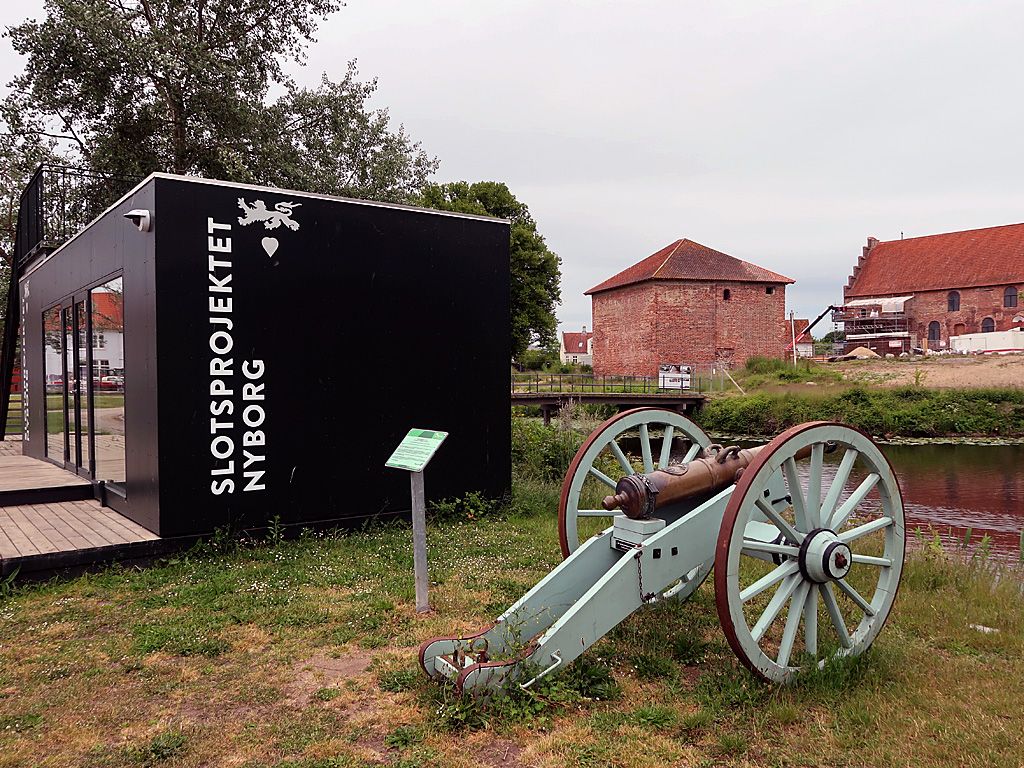
Nyborg Castle and town are important memories from Denmark's medieval and renaissance periods. The castle was founded by Valdemar II around the year 1200 to monitor the Great Belt. Monarchs resided here for almost 400 years. The country's first parliament, the Dane Court, met here. Denmark’s first constitution was signed here in 1282. The castle was badly damaged during the Swedish Wars in the 1650s, fell into disrepair and became a military warehouse. In the early 1900s, it was listed and after an incomplete restoration opened to the public.
Nyborg has worked together with The Agency for Culture and Palaces to recreate and disseminate its history as a royal city. The ambition has been to develop Nyborg Castle and town as a candidate for UNESCO's World Heritage List.
The project created debates about principles for restoration and dissemination of cultural heritage. In December 2020, an official board refused to grant a necessary dispensation. Time must tell what consequences this decision will have for visitors' access to the castle.
The restored castle was planned to reopen in 2023.
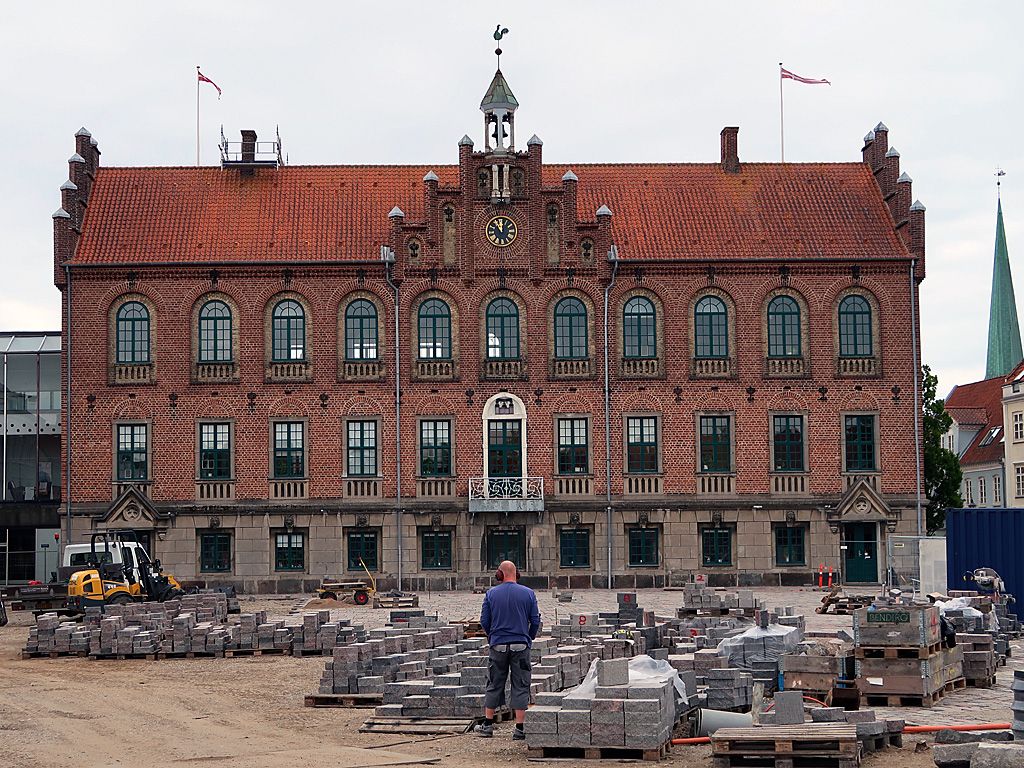
When we visited Nyborg in June, the renovation of the square in front of the City Hall was underway. It was laid out as a tournament venue in the 1550s and is still used for knightly battles. During annual markets, men in armour on horseback fight with long lances helped by women in timely clothes. You can experience this in real life and on You Tube.
The square stood ready for inauguration when the towns Christmas tree was lit in late November. Due to covid-19 people were not allowed to gather and watch the event, but they could follow it live on Facebook.
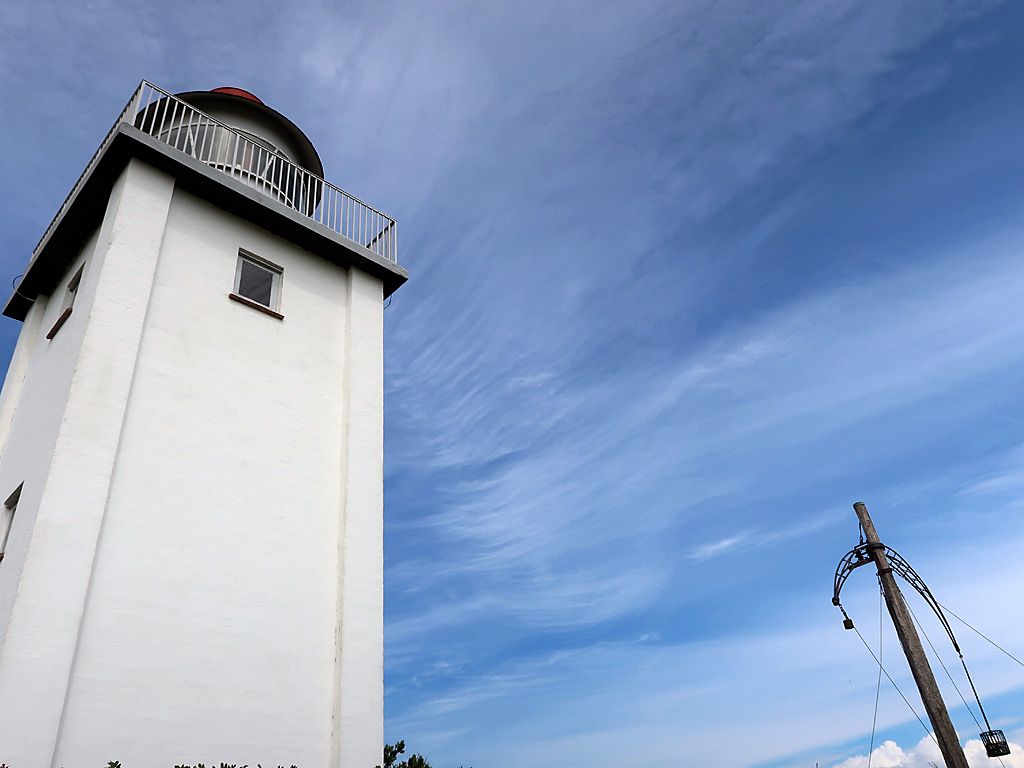
The area by Slipshavn and Knudshoved offers a fascinating mix of nature and culture. We went for a walk through the woods and on the beach. The day ended with an overnight stay by the harbour.
Slipshavn is Nyborg's earliest port. History has left relics like fortifications, a customs building and military installations, which are now used by the Home Guard.
The lighthouse led ships in clear weather, while the basket was used for firecrackers when a fog covered the Great Belt.
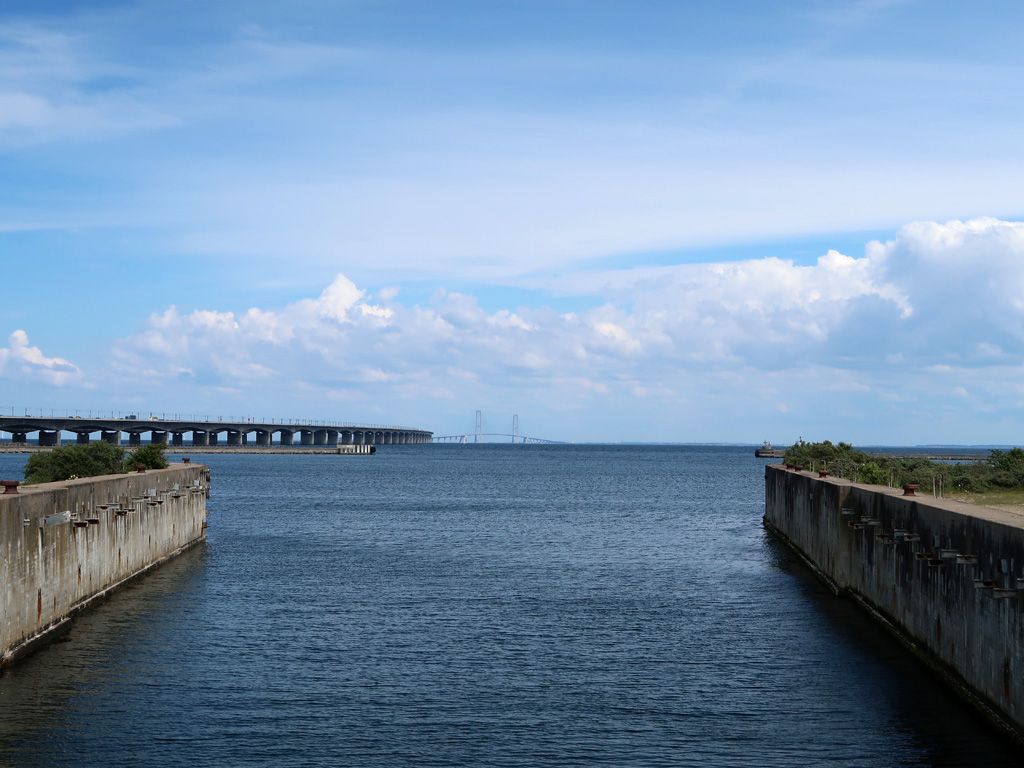
The ferry berth in the foreground was made redundant by the bridges and tunnel in the background. The train connection was completed in 1997, the road connection stood ready for royal inauguration in 1998.
The sight reminded us of the legendary “Great Belt coffee” that held our relationship together when Hanne lived in Copenhagen, Lars in Odense.
Kerteminde Municipality
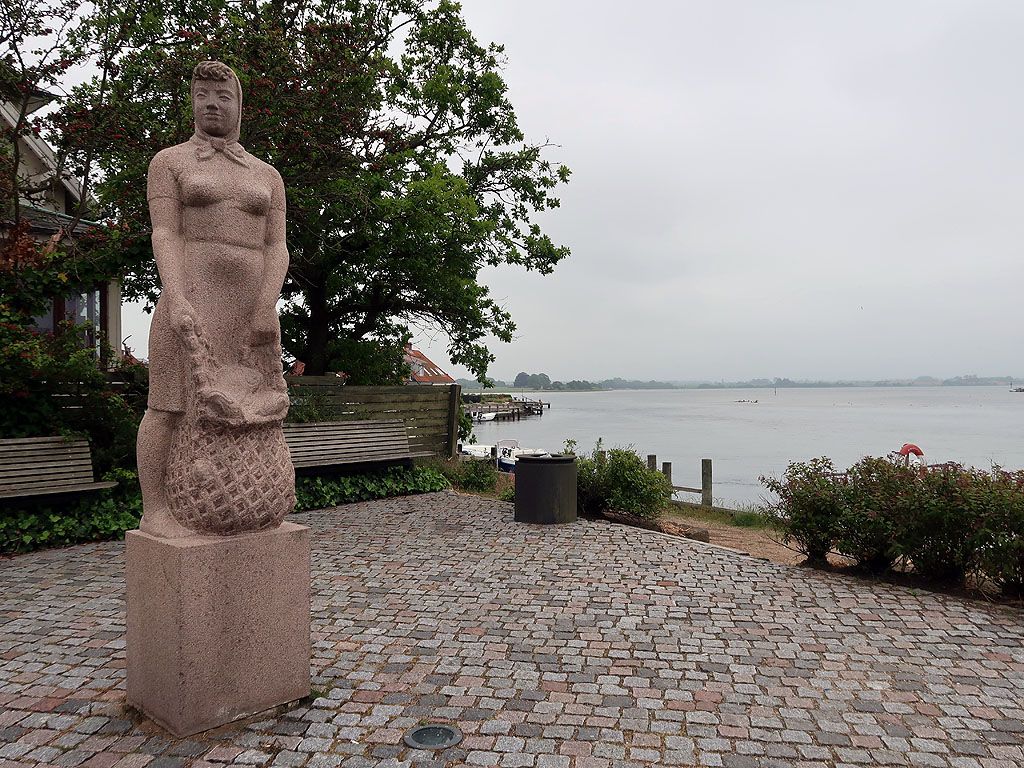
The real Amanda was probably named Sophie Krag. The 20-year-old daughter of a watchmaker from Kerteminde went to Copenhagen in 1891 with a dream of becoming an actress. Here, she was engaged to one man and soon after fell in love with another man. The love triangle made her the main character of a song about the unfaithful Amanda from Kerteminde. Sophie became famous or perhaps infamous for her love, but she never got married.
The statue at Langebro was created by the artist Robert Lund Jensen in 1954. He depicted a young fisher girl who was connected to the song and therefore called Amanda.
We do not know if the story is true, but we do know that it is so good that it is told over and over again with small variations and many details about the characters involved.
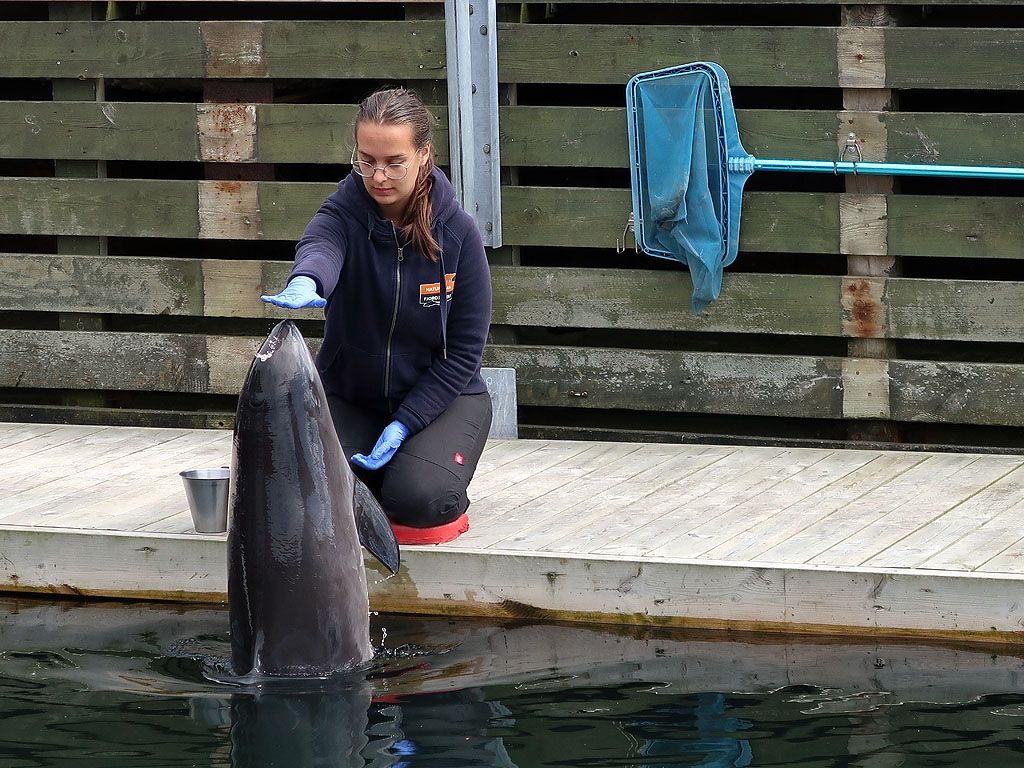
In the autumn, Fjord & Bælt came in headwinds from animal welfare circles for keeping wild animals in captivity. The centre's answer was that it contributes to research which gives animals in the wild better conditions. The interaction between animals and people in the place makes it trustworthy that both sides thrive.
The special exhibition about invasive species was parallel to a similar exhibition at Naturama in Svendborg. A film ended by asking if man is an invasive species that has spread across the globe.
It is probably wise to gather knowledge about, how we can give animals better living conditions.
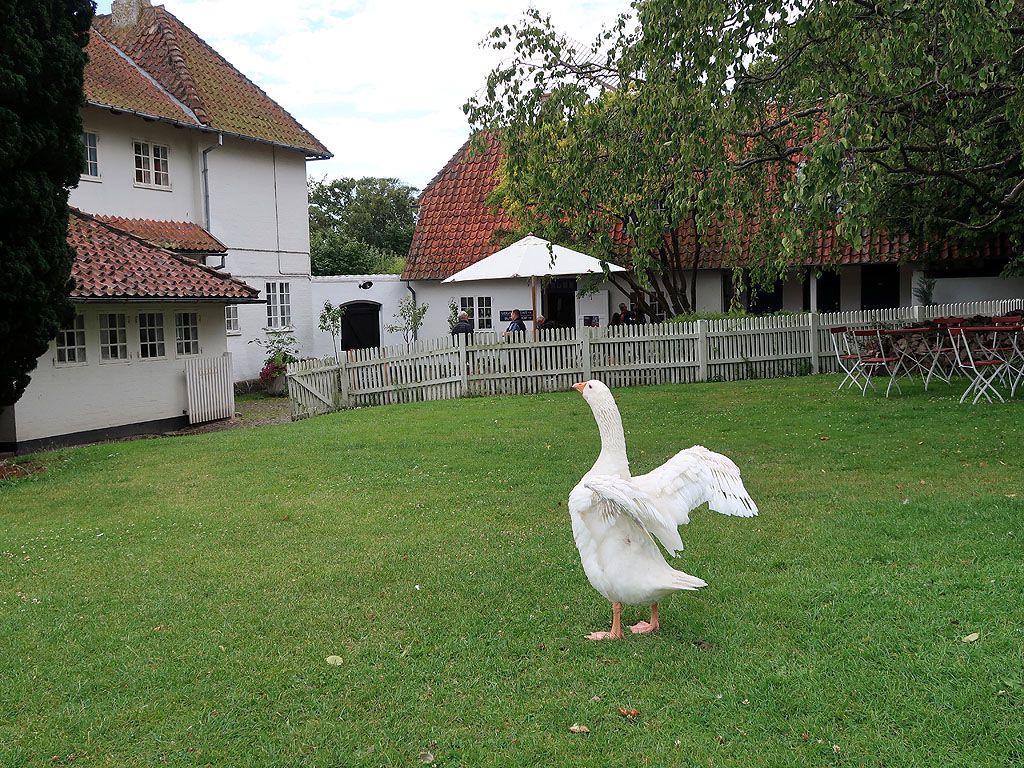
The painters Johannes and Alhed Larsen's villa from 1901 is the core of the museum. It was designed by the architect Ulrich Plesner based on Larsen's own sketches and rebuilt by Carl Petersen, who was also the architect behind Faaborg Museum. The choice of colours, the furniture and the artworks all contribute to the authentic experience. Later buildings on the premises have been carefully integrated.
The garden has birds that were frequent motifs in Johannes Larsen's works. The beautiful home became a gathering place for painters and intellectuals of the time.
During a visit in August, we saw a special exhibition, with the photographer Henrik Saxgren's pictures of landscapes and their inhabitants.
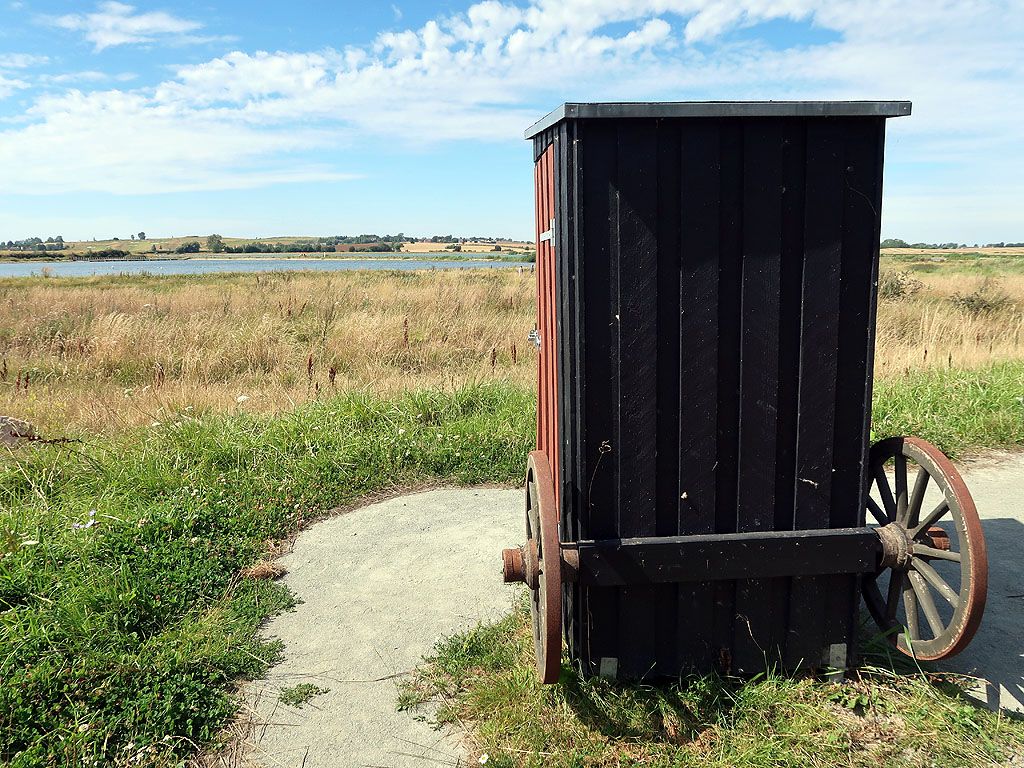
A little north of Kerteminde, the municipality has transformed a former agricultural area into an attractive nature resort inspired by Johannes Larsen and Fritz Syberg's landscape paintings.
Syberg's small movable studio sheltered him from wind and weather when he painted in nature. Today's visitors can find shelters to spend the night and a room with picnic tables.
The Syberg family moved from Svanninge near Faaborg to Over Kærby near Kerteminde in 1902. The authors Otto Gelsted and Johannes V. Jensen called the area near the farm, where the artist lived and found motifs "Sybergland".
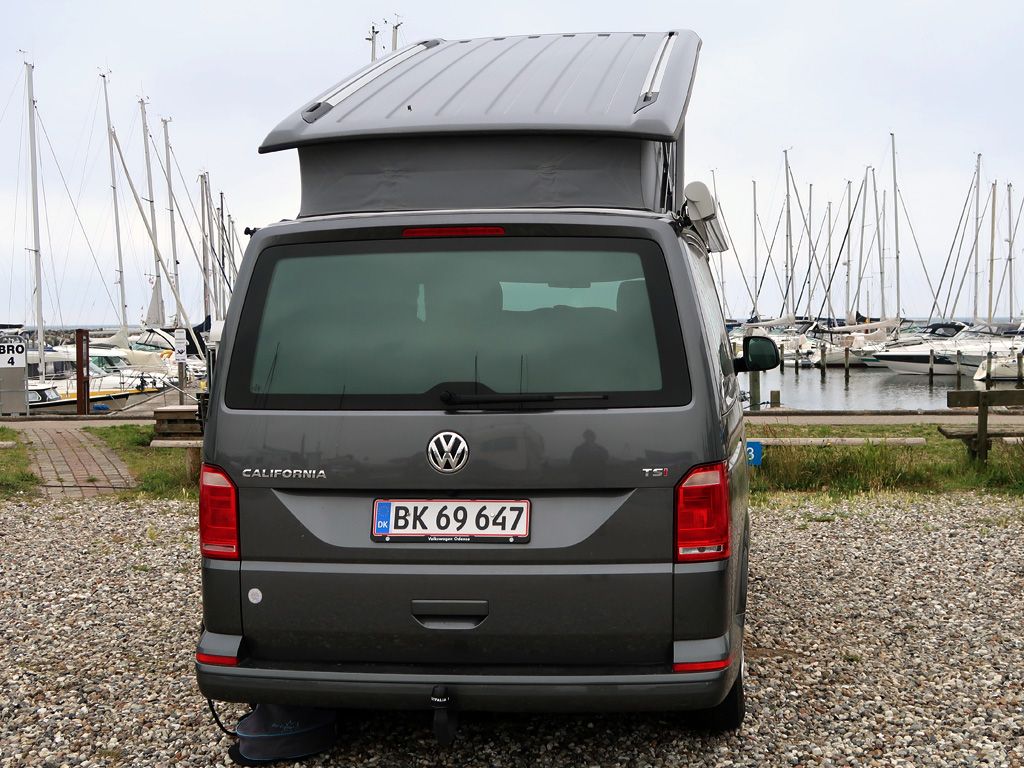
During our trips on Funen, we woke up to a sea view every morning. This year we have learnt that marinas' motorhome pitches are a good solution, if you just need electricity, water, a shower and a toilet.
In the beginning, we were concerned whether we risked infections in the shared facilities, but they were always very clean and had hand sanitizers. We have not heard of anyone who has caught covid-19 at a marina or a campsite. Some campers had to take a fast trip from Spain to reach home before the borders of Denmark and Norway closed in the spring.
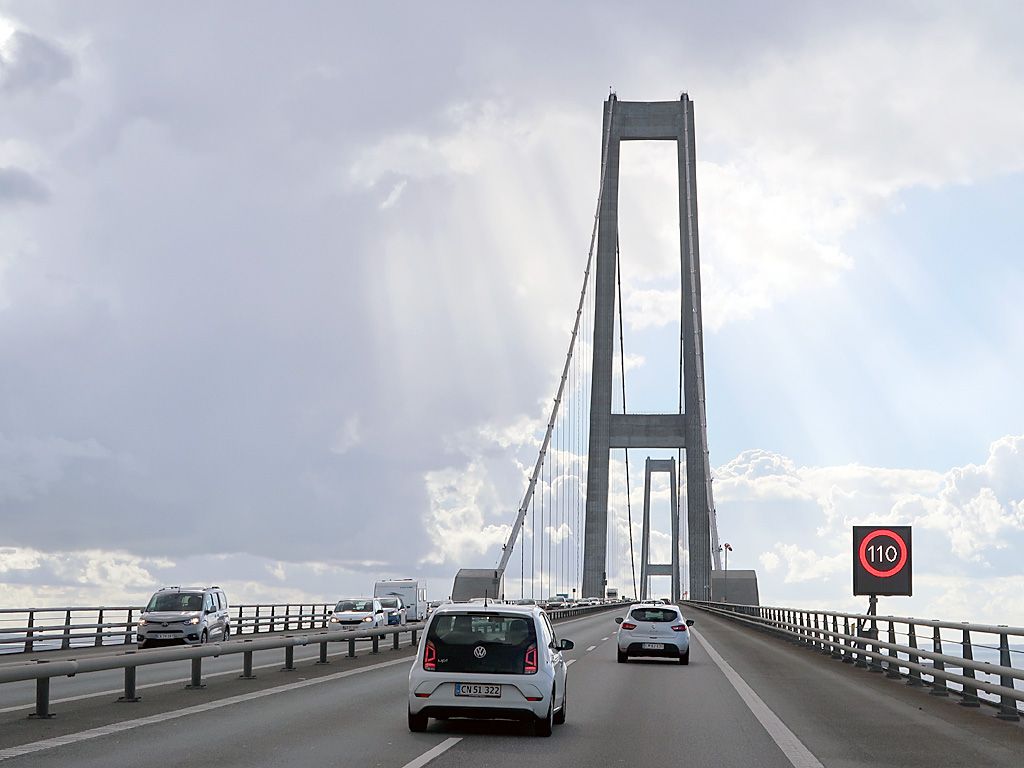
After a year with corona and two comprehensive lockdowns Denmark is gradually reopening as people get their vaccinations. Mutual trust, democratic traditions, the welfare state and a widespread digitization helped us manage the crisis. Hopefully we will use this experience to find solutions for the climate challenge.
Our tours in 2020 have reminded us, that we cherish Funen and are happy, that bridges and ferries connect it with the rest of the world. In 2021, we optimistically hope to be able to travel in Poland and to welcome foreigners on our native island.
References
Carolyn Bain and Christian Bonetto: lonely planet. Denmark. 2015.
Municipalities and towns have websites and tourist offices with information in several languages.
Most cultural institutions have websites with English sections.
Visit Fyn’s website with tourist information.
March 2021
